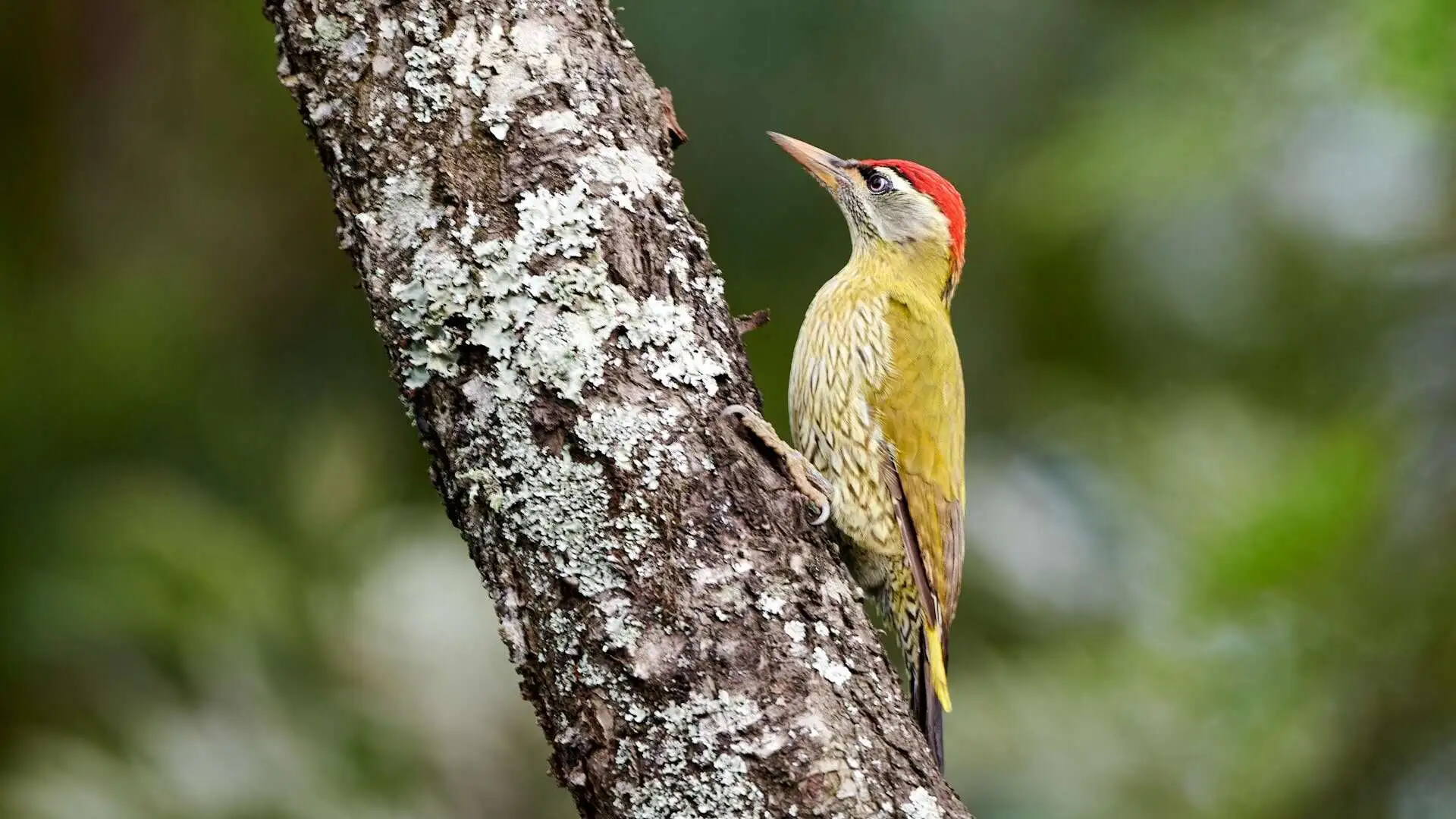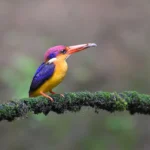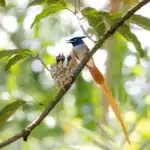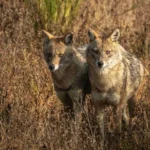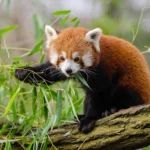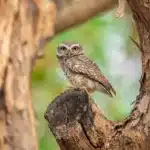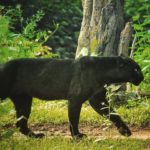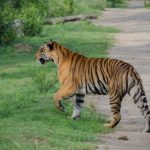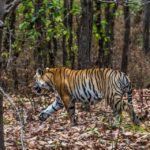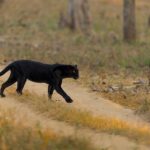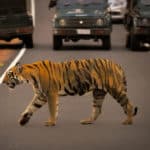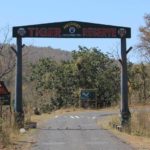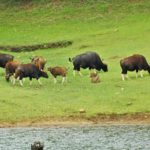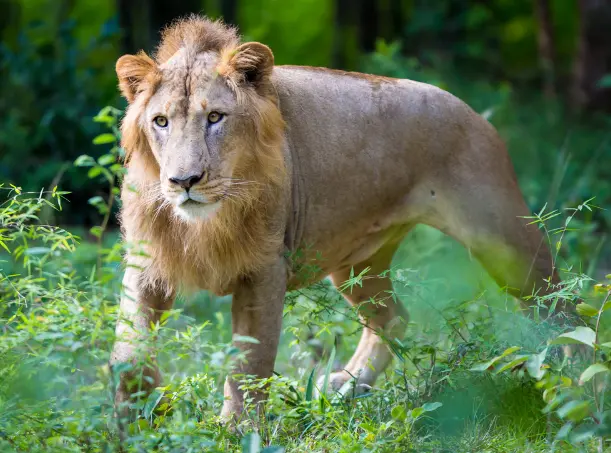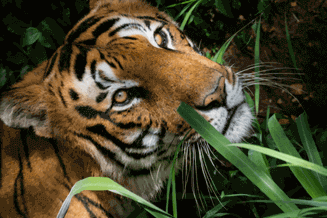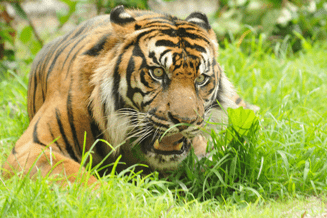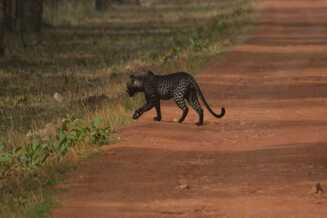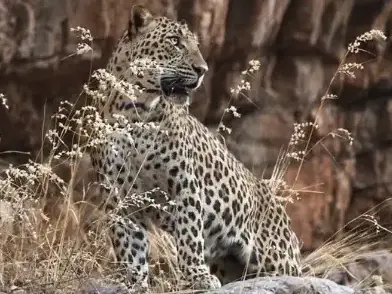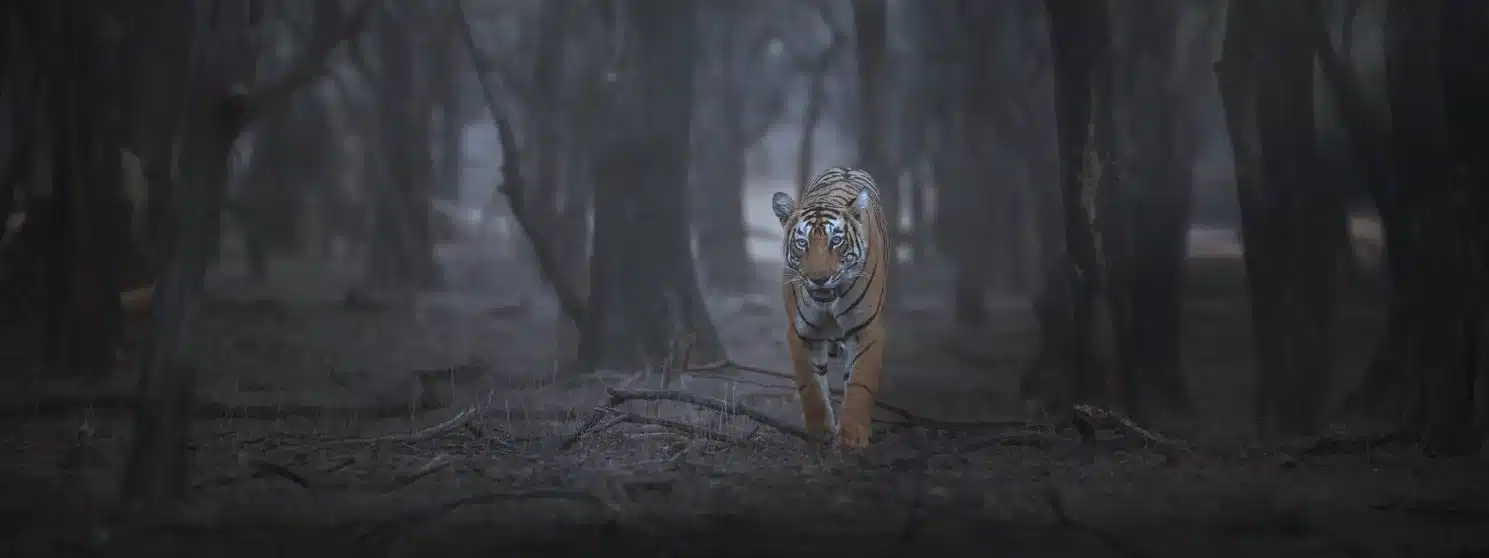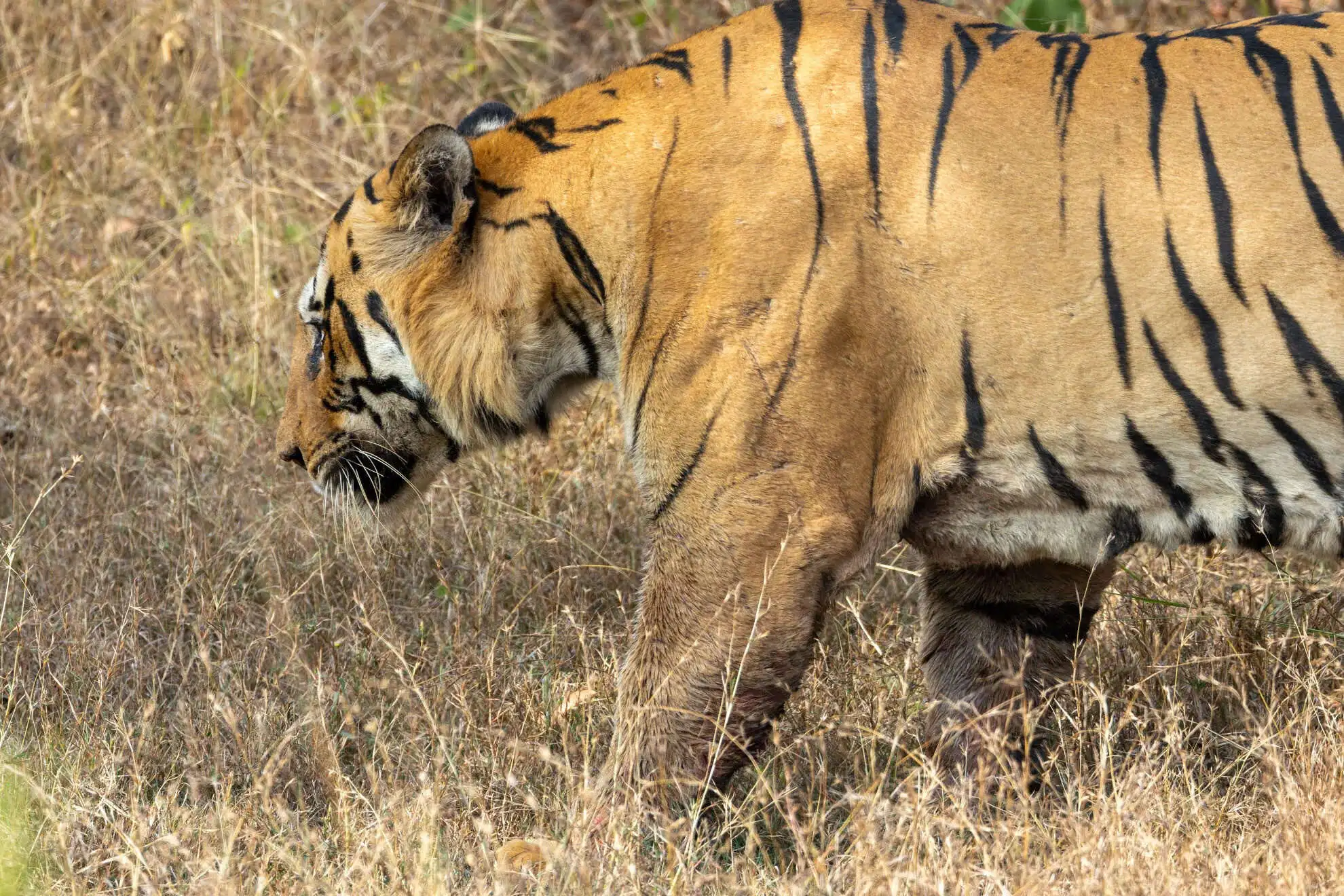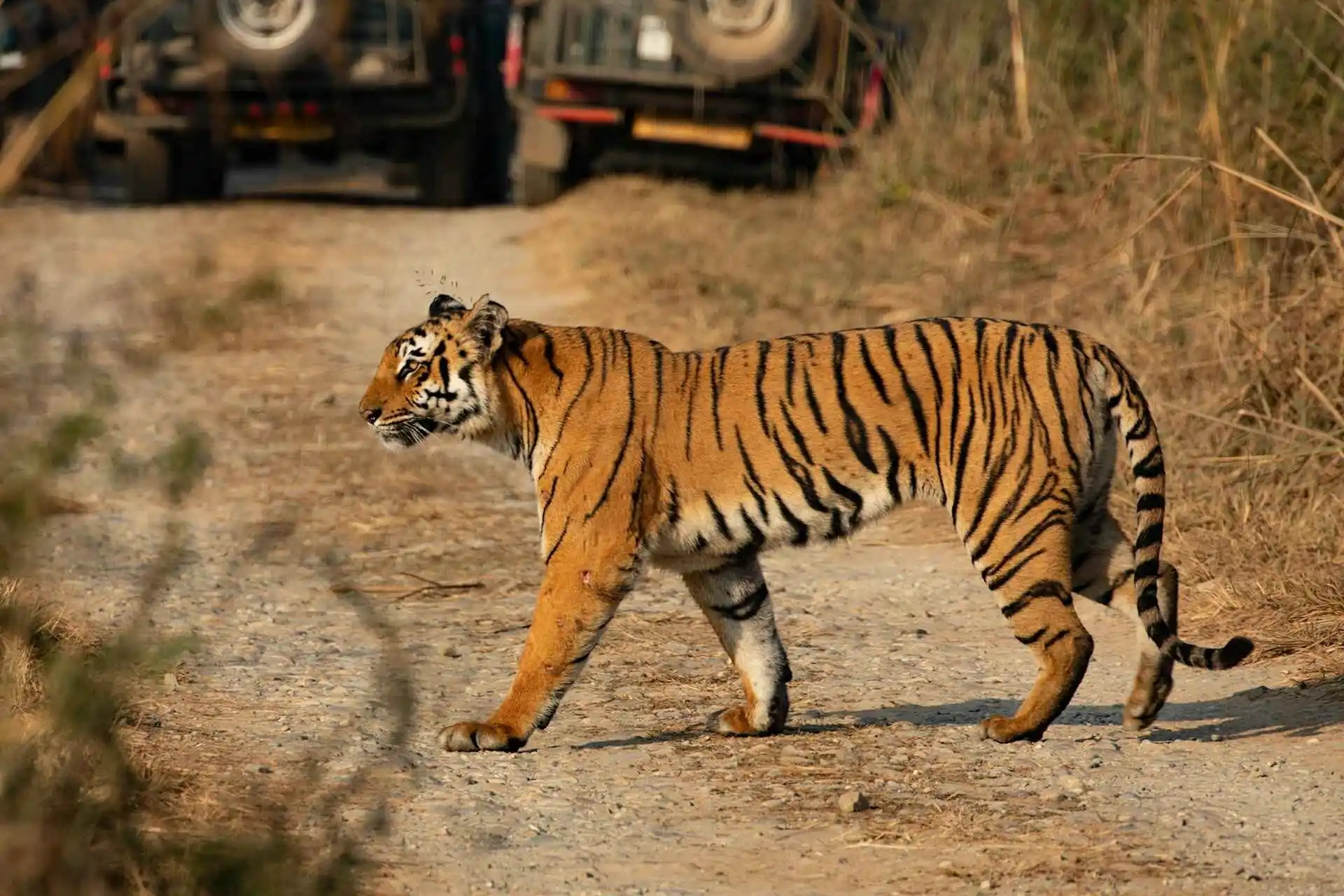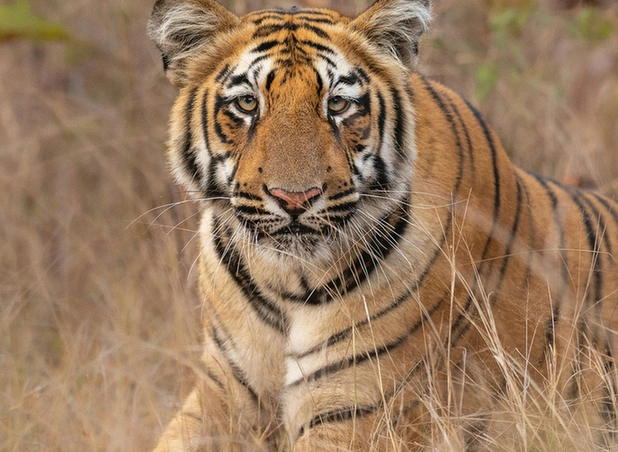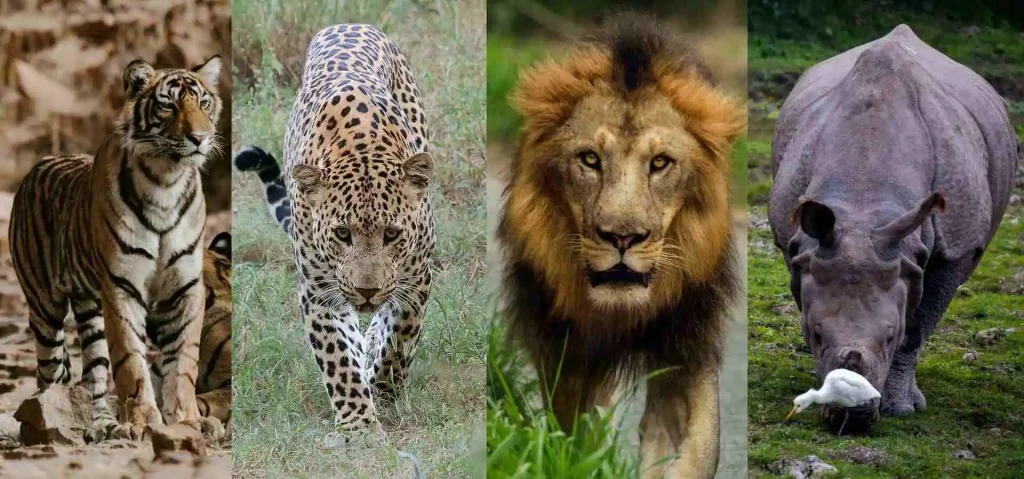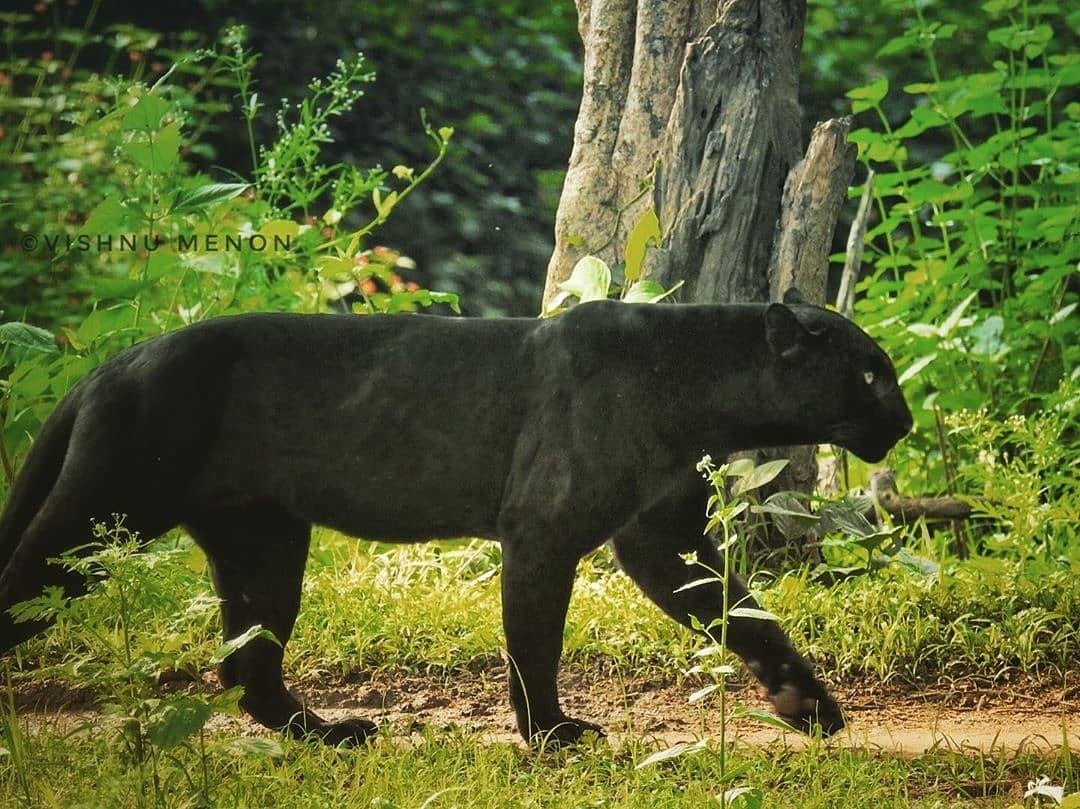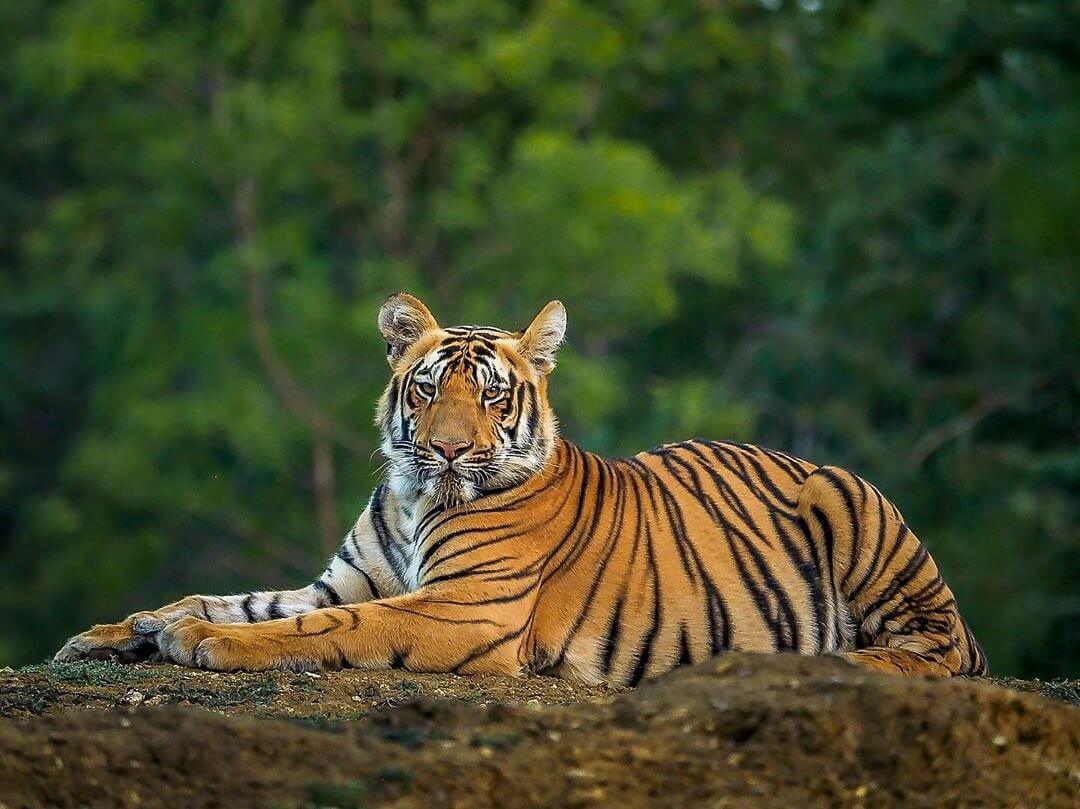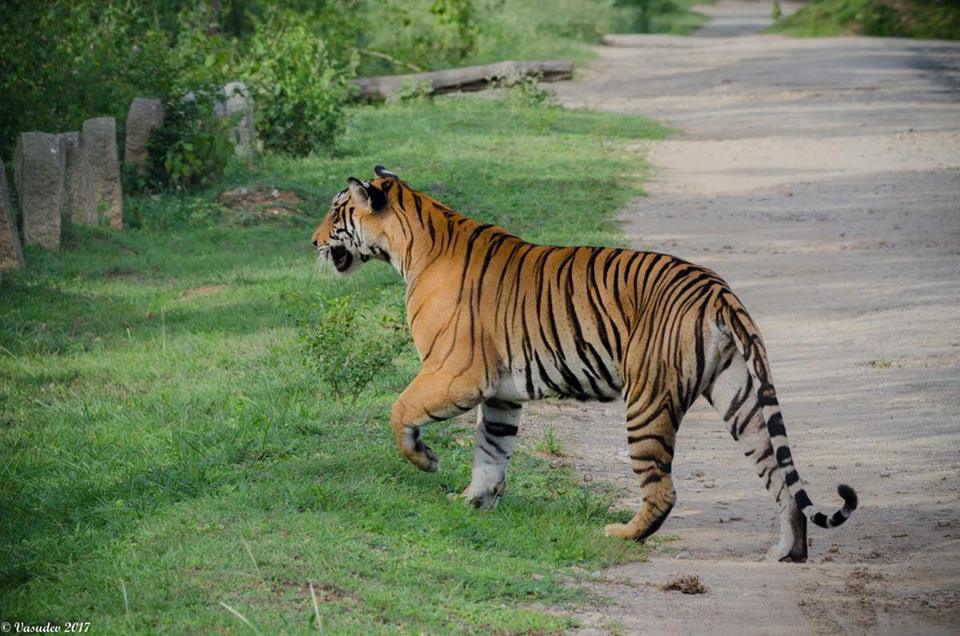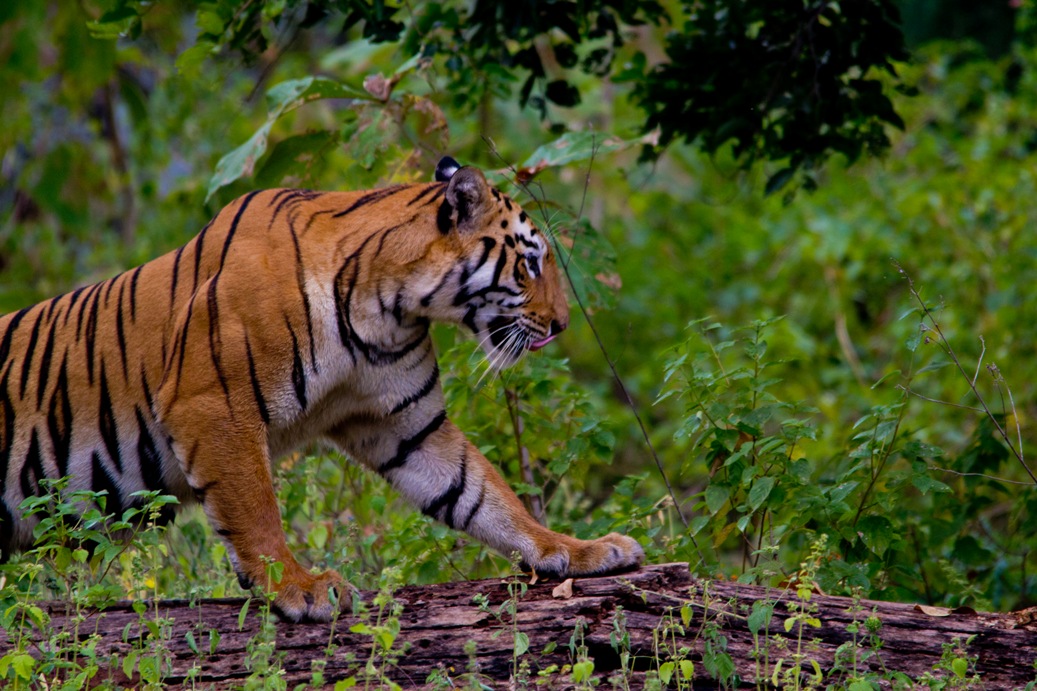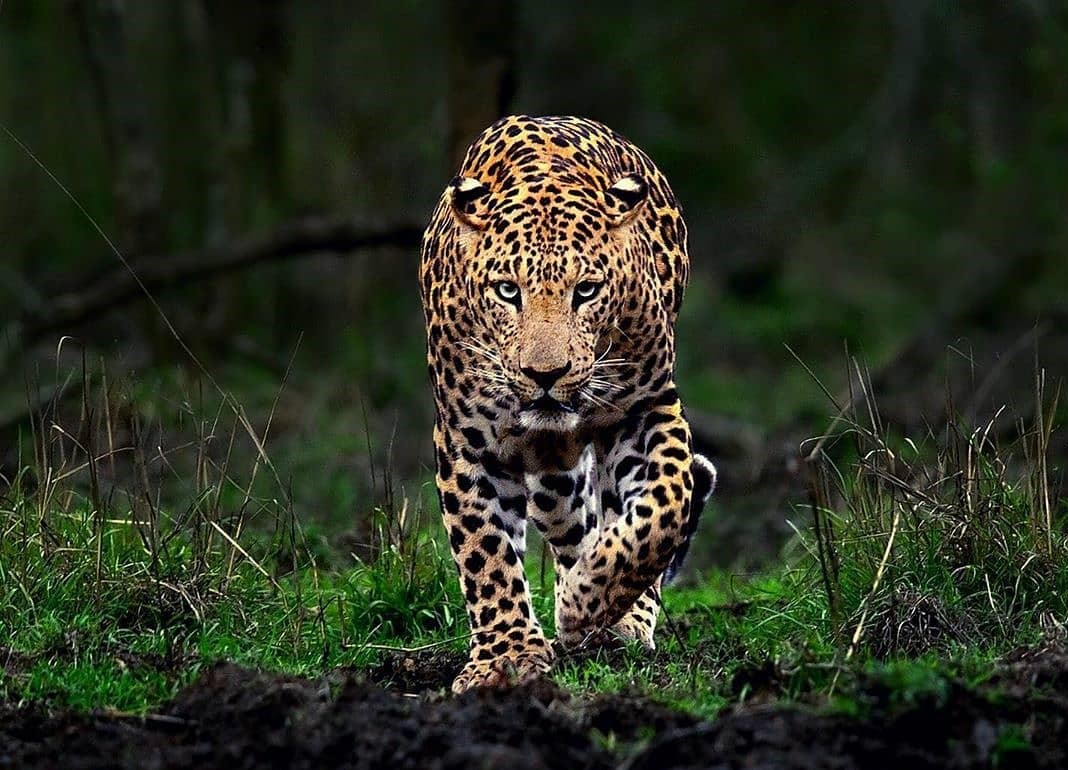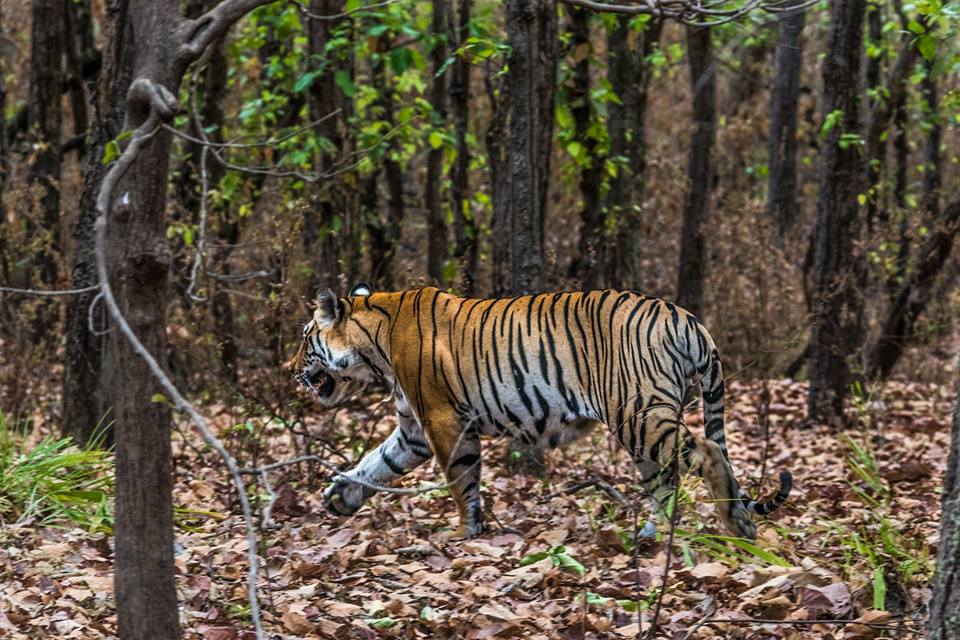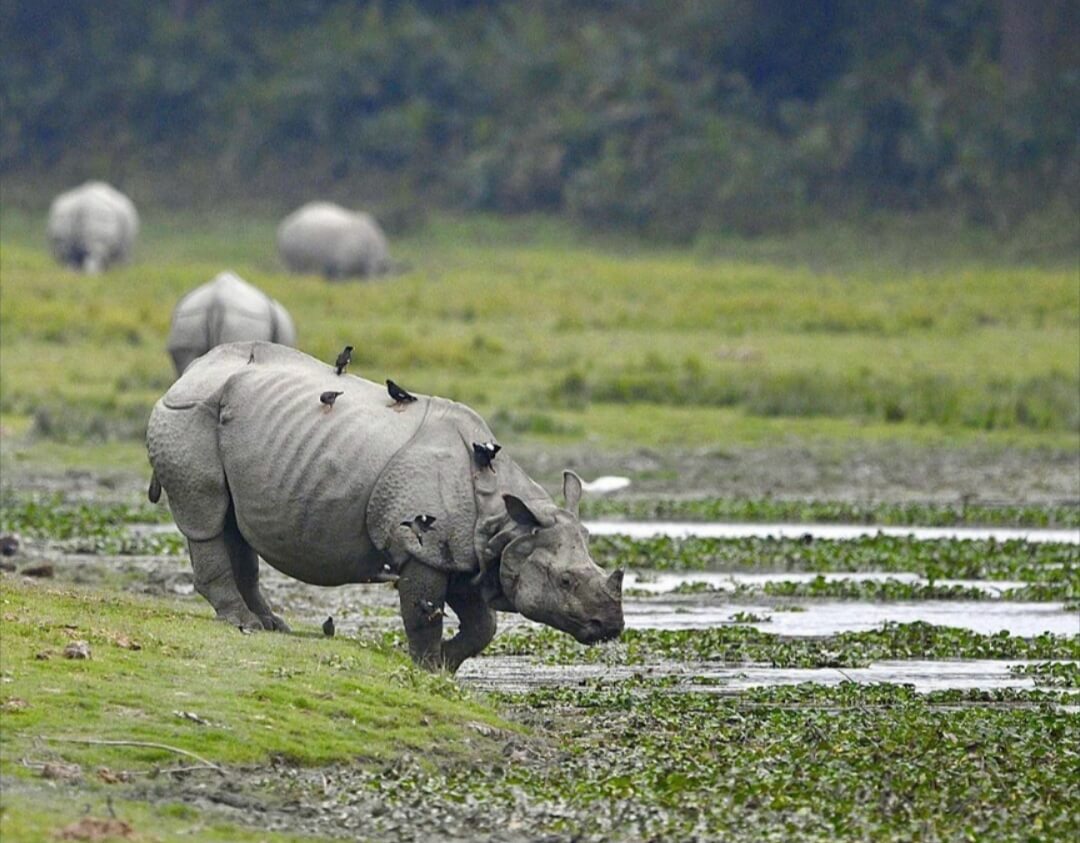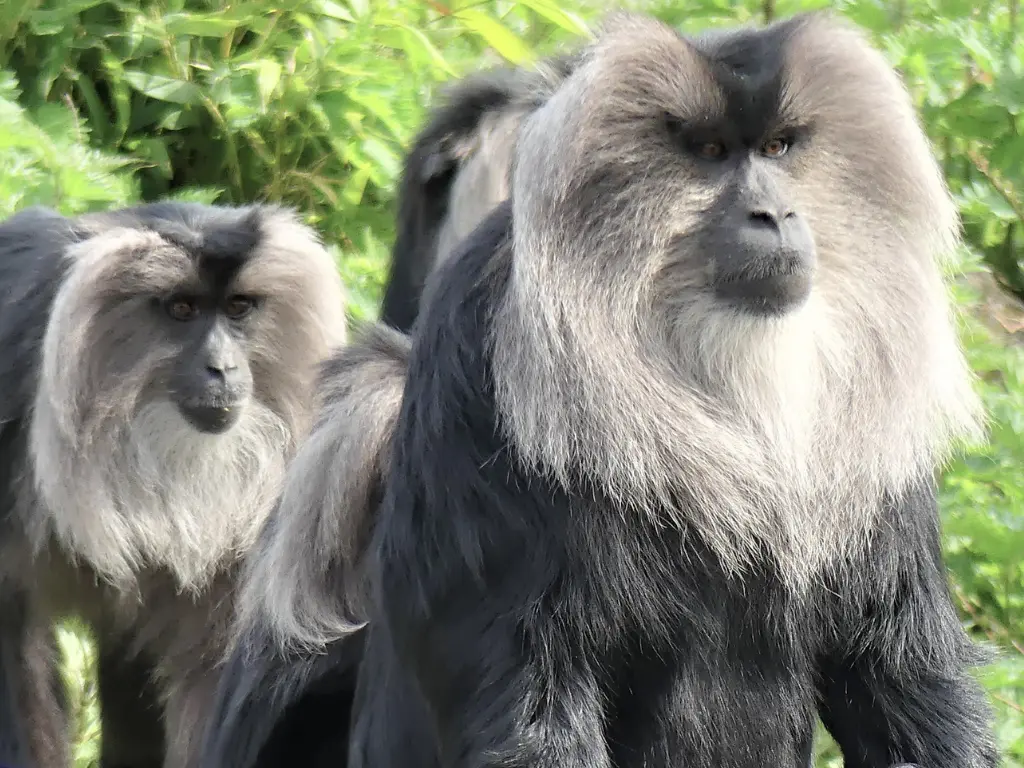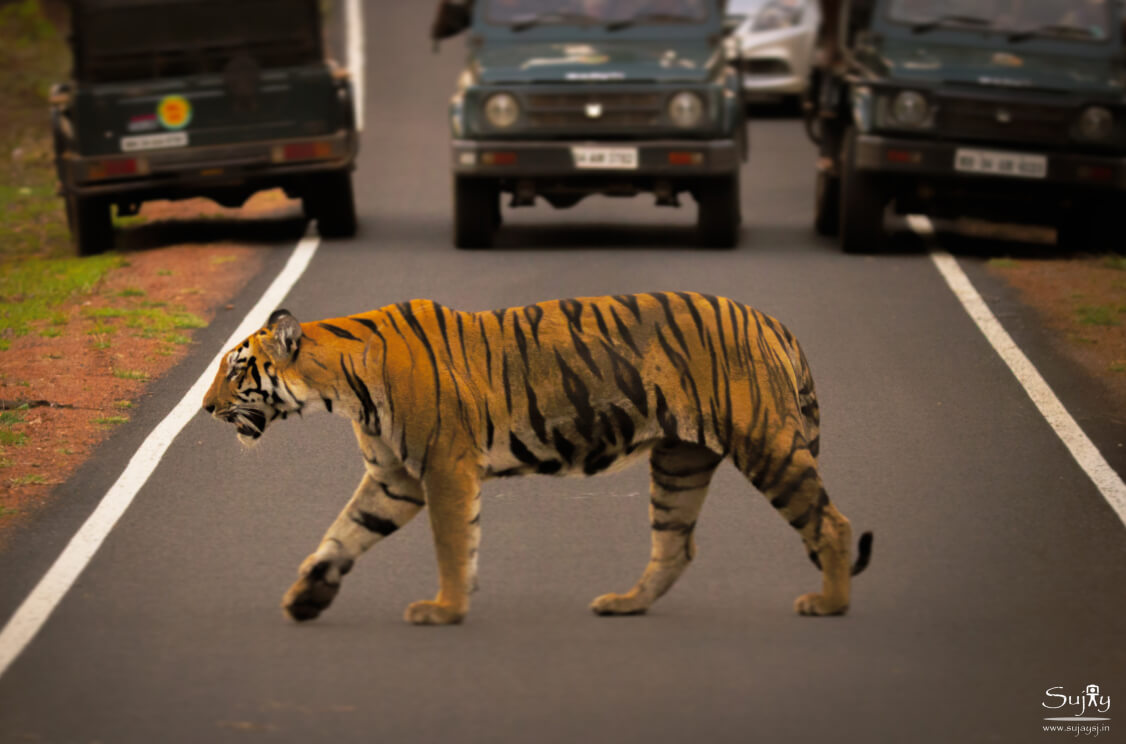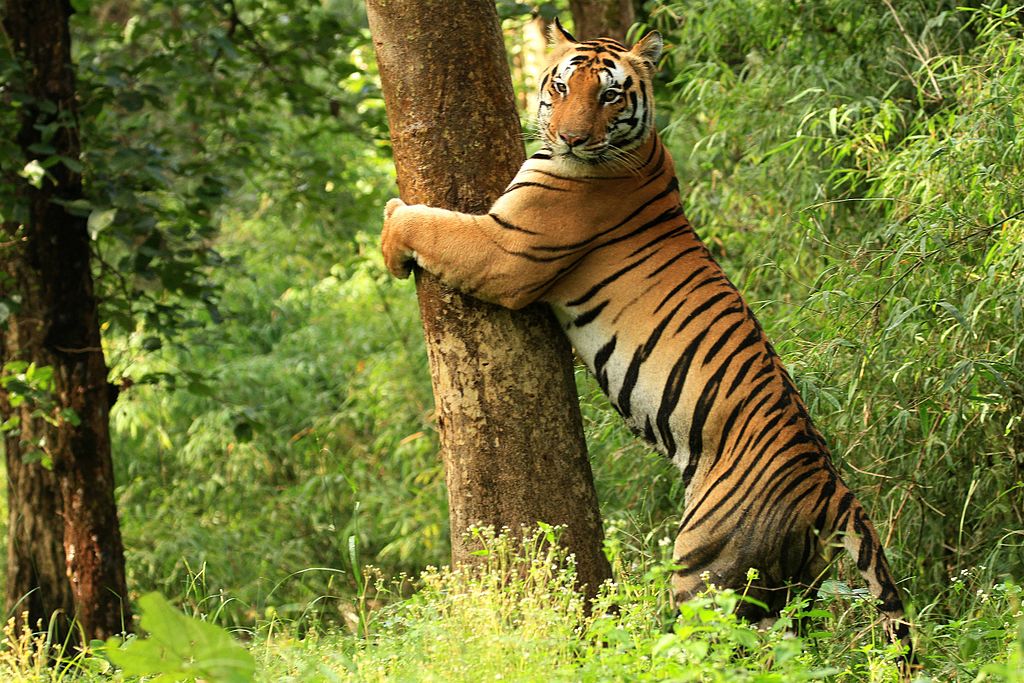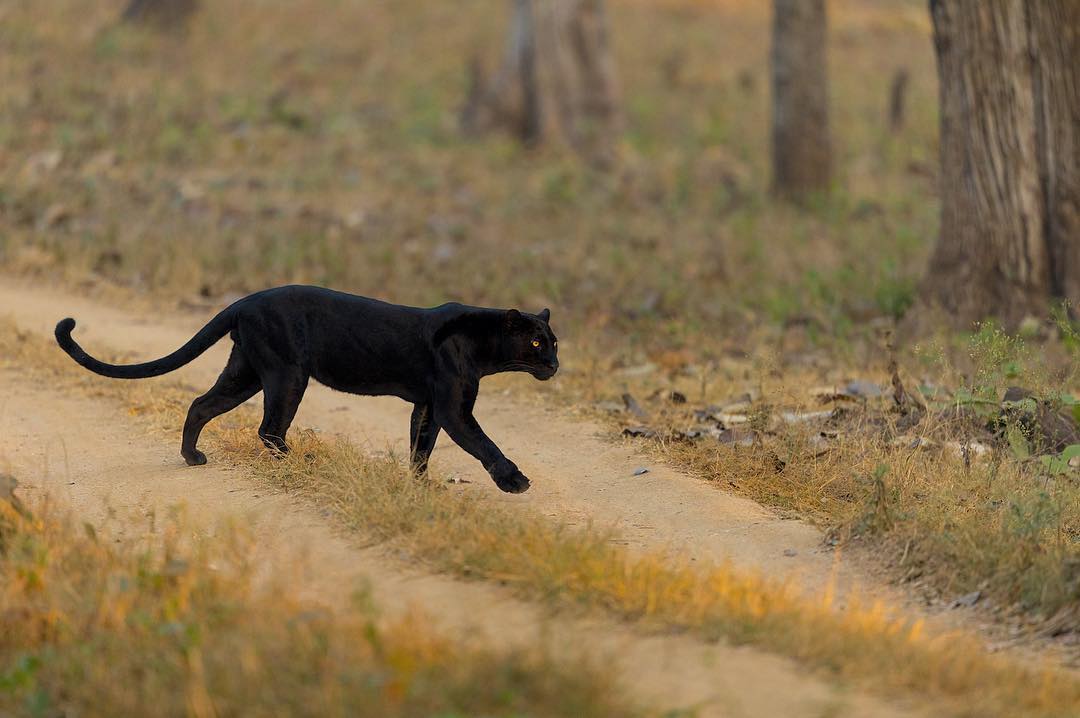Satpuda is not just home to magnificent landscapes and diverse wildlife but also a thriving habitat for a wide range of bird species. From melodious songbirds to powerful raptors, the region offers an incredible birdwatching experience. Here are some of the fascinating birds found in Satpuda.
Commonly Found Birds in Satpuda
Spotted Dove
Scientific Name: Spilopelia chinensis
A symbol of peace, the Spotted Dove is commonly seen foraging on the ground in wooded areas. Its soft cooing calls and distinct spotted neck pattern make it easy to recognize.
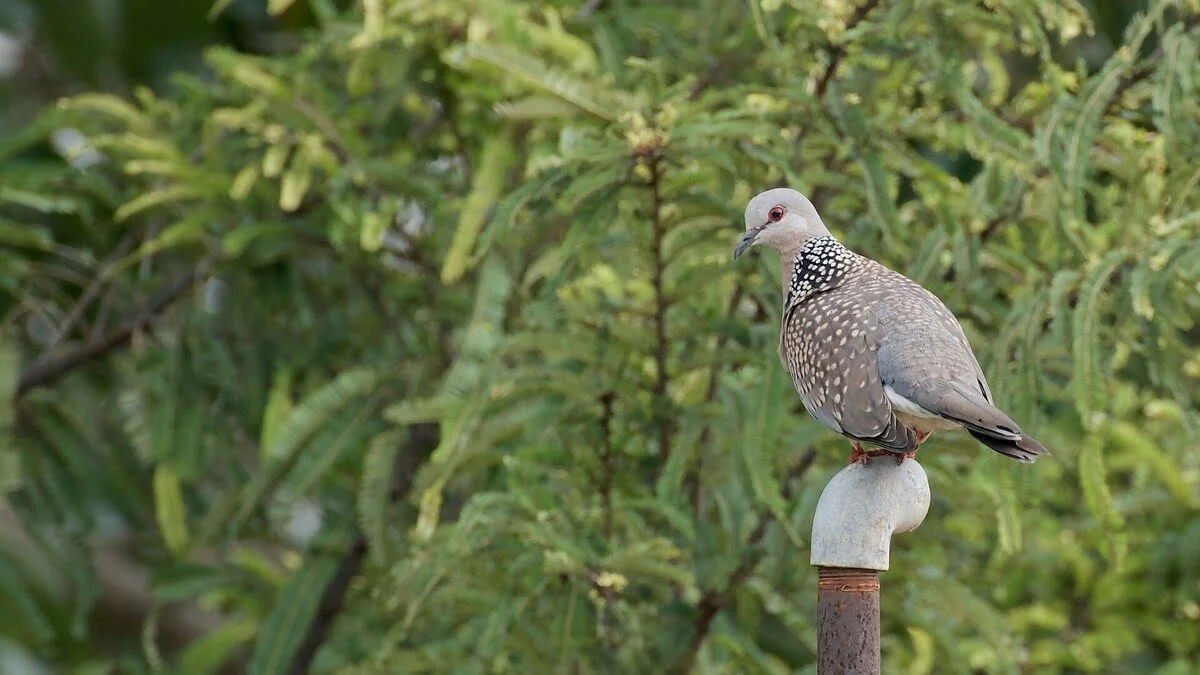
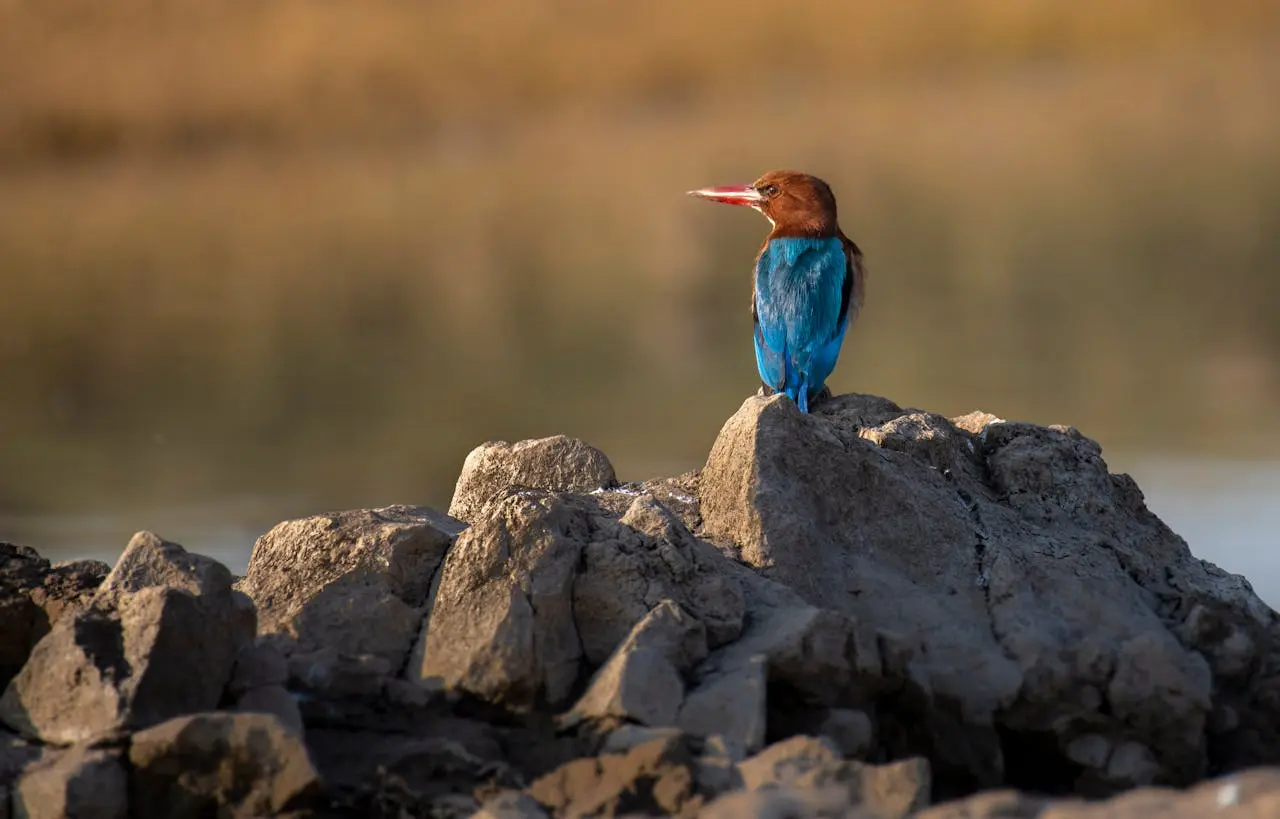
Common Kingfisher
Scientific Name: Alcedo atthis
With dazzling blue and orange plumage, the Common Kingfisher is often spotted near water bodies, swiftly diving in to catch fish. Its sharp calls add to the lively ambiance of the forests and rivers.
Yellow-crowned Woodpecker
Scientific Name: Leiopicus mahrattensis
This small yet striking woodpecker is often seen tapping on tree trunks in search of insects. Its yellow crown and black-and-white plumage make it an exciting sight for bird enthusiasts.
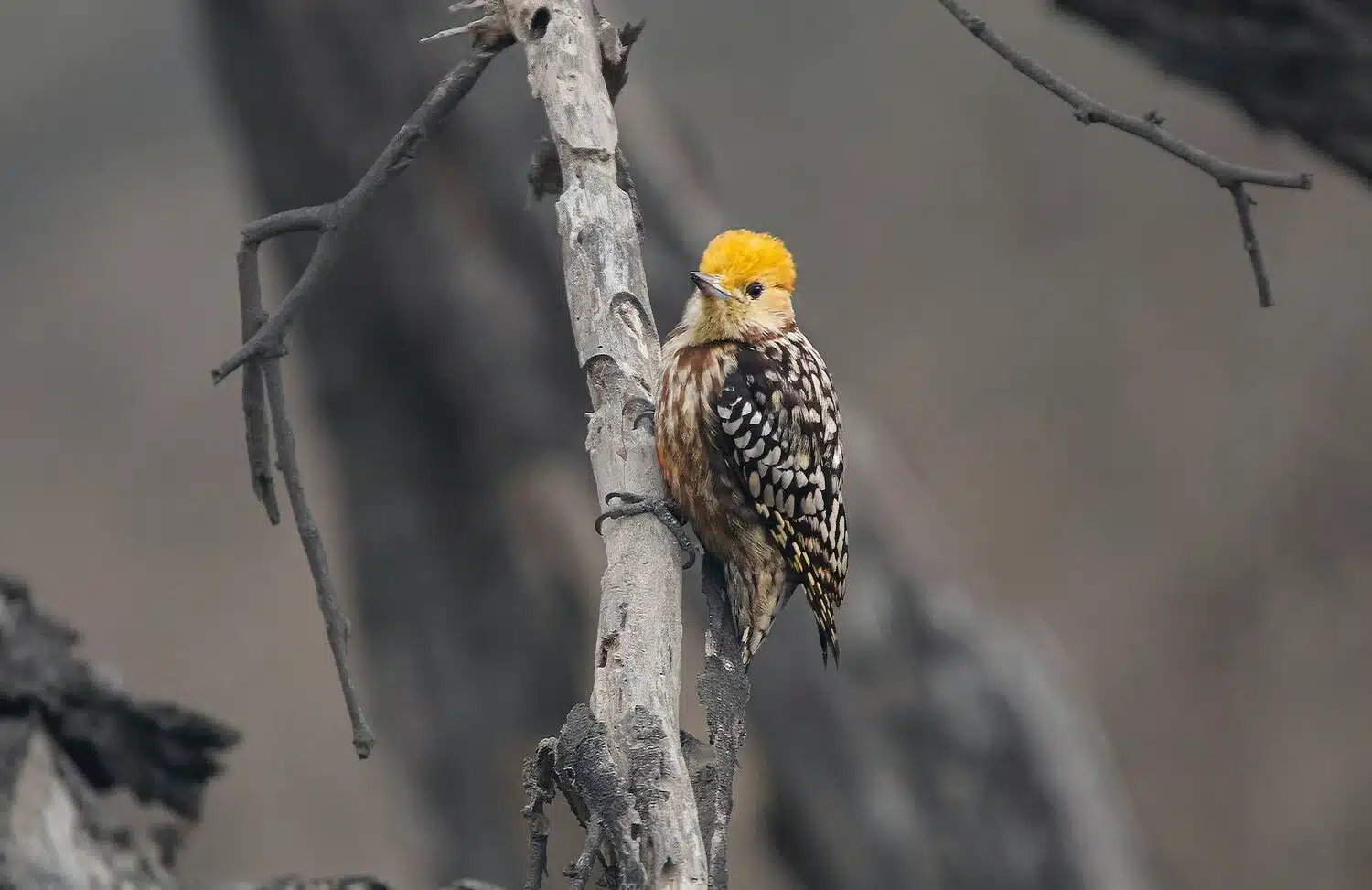
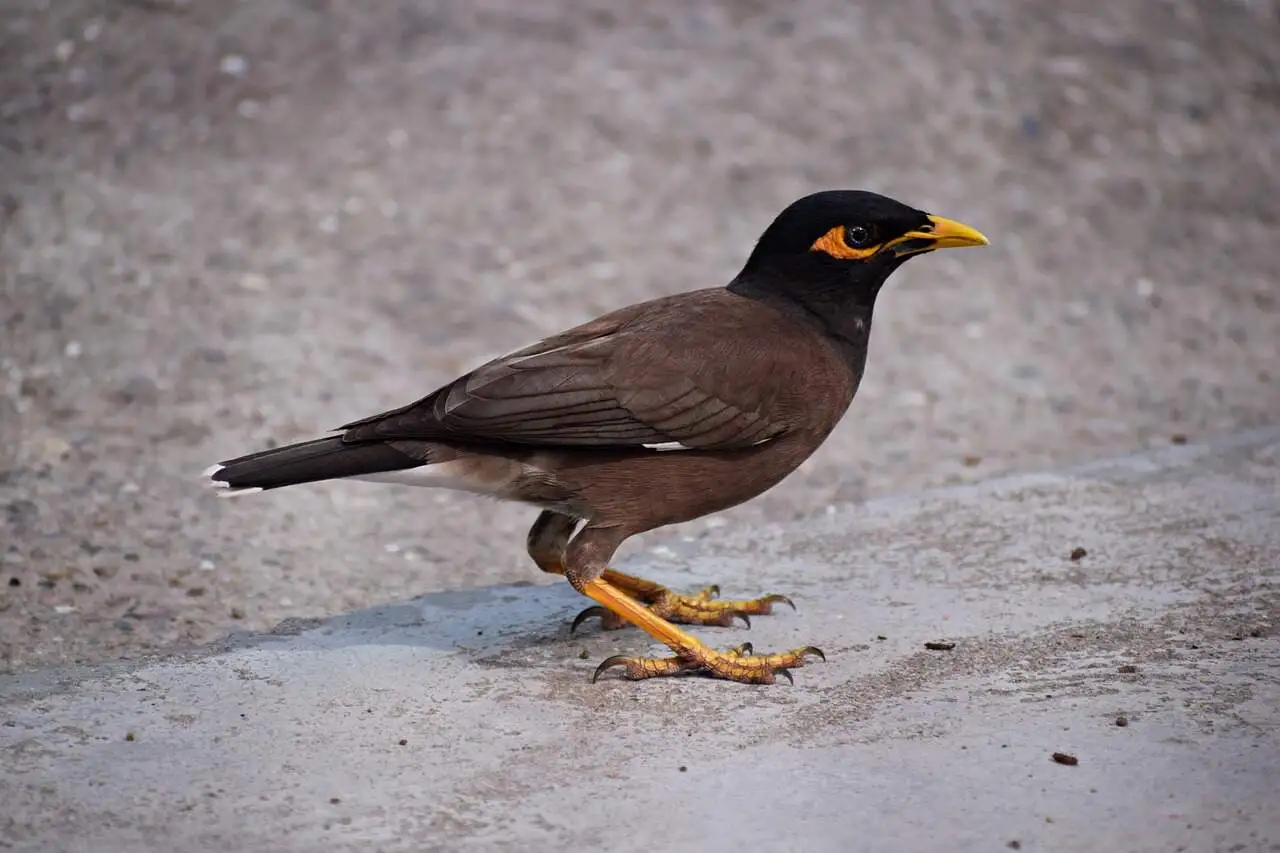
Common Myna
Scientific Name: Acridotheres tristis
A highly adaptable bird, the Common Myna is often seen in open fields and near human settlements. Its loud calls and ability to mimic sounds make it an interesting species to observe.
Jungle Fowl
Scientific Name: Gallus sonneratii
The wild ancestor of domestic chickens, the Jungle Fowl is known for its vibrant plumage and loud crowing. It prefers dense forests and is often seen scratching the ground for food.
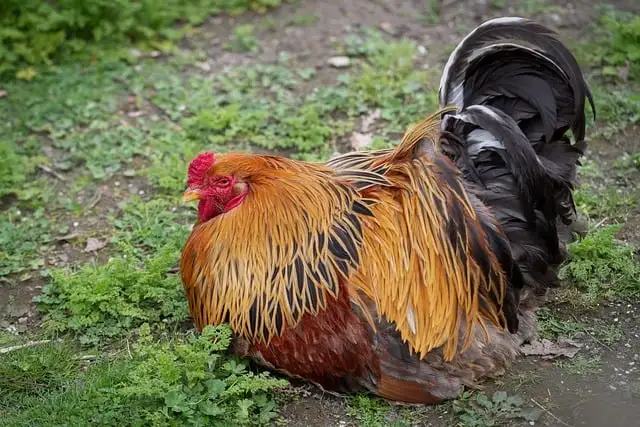
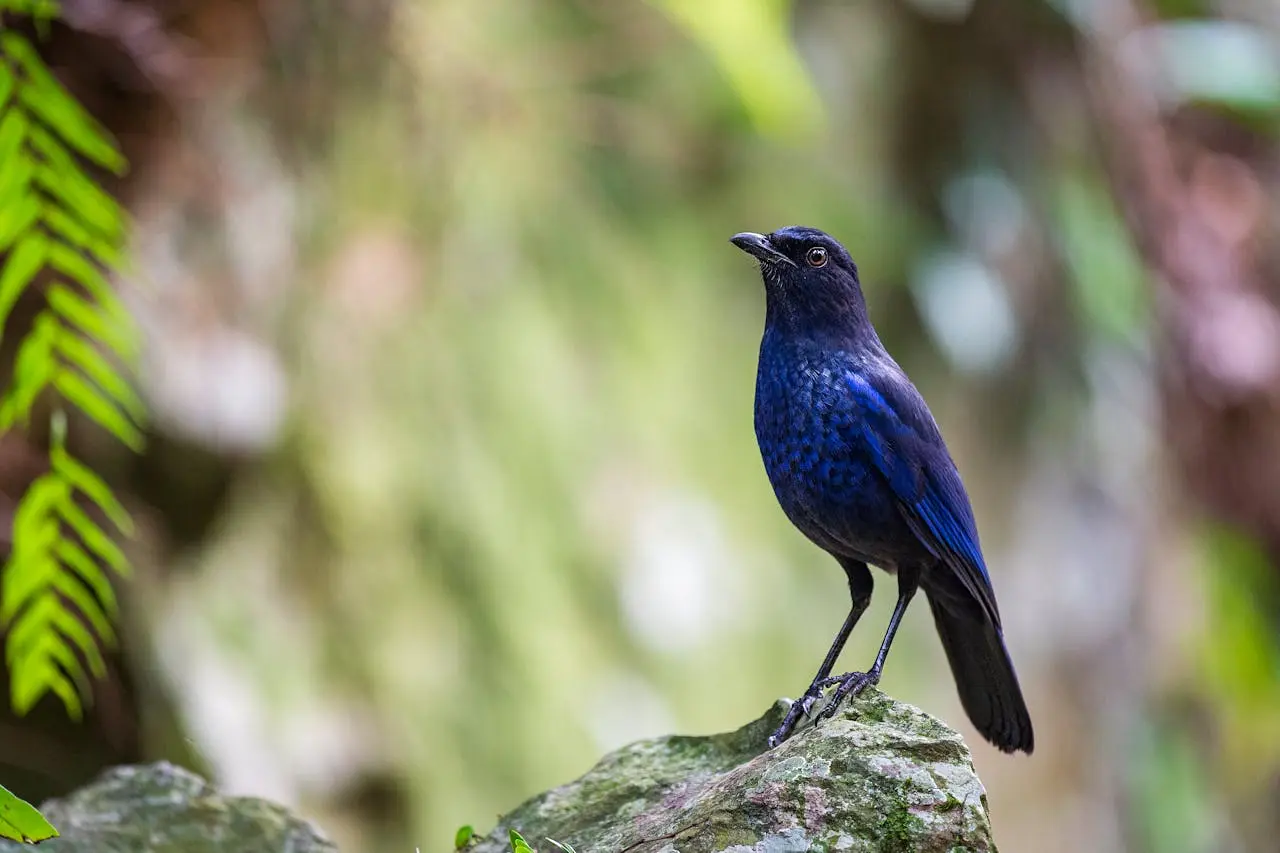
Malabar Whistling Thrush
Scientific Name: Myophonus horsfieldii
Also known as the “Whistling Schoolboy” due to its melodious call, this deep blue-colored bird is a true delight for birdwatchers in the Satpuda forests.
Bee-eater
Scientific Name: Merops orientalis
With its slender body, pointed wings, and bright green plumage, the Bee-eater is a delightful bird that catches insects mid-flight, particularly bees and wasps.
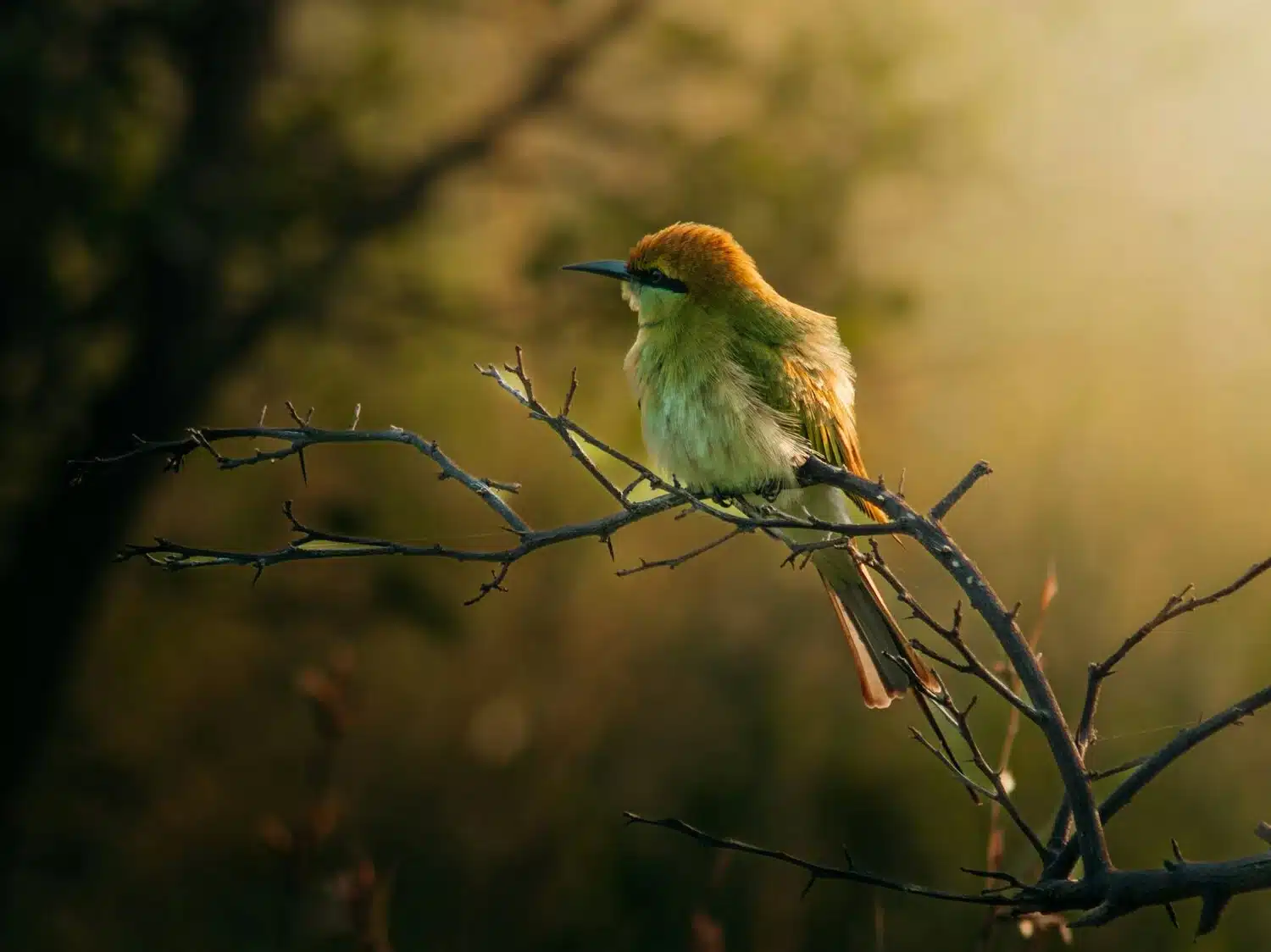
Additional Common Birds of Satpura
- Spotted Dove (Spilopelia chinensis)
- Common Kingfisher (Alcedo atthis)
- Yellow-crowned Woodpecker (Leiopicus mahrattensis)
- Common Myna (Acridotheres tristis)
- Jungle Fowl (Gallus sonneratii)
- Malabar Whistling Thrush (Myophonus horsfieldii)
- Bee-eater (Merops orientalis)
- Indian Roller (Coracias benghalensis)
- Black Drongo (Dicrurus macrocercus)
- Greater Coucal (Centropus sinensis)
- Coppersmith Barbet (Psilopogon haemacephalus)
- Red-vented Bulbul (Pycnonotus cafer)
- White-throated Kingfisher (Halcyon smyrnensis)
- Brahminy Starling (Sturnia pagodarum)
- Indian Pond Heron (Ardeola grayii)
- Lesser Whistling Duck (Dendrocygna javanica)
- Indian Pitta (Pitta brachyura)
- Jungle Babbler (Argya striata)
- Yellow-footed Green Pigeon (Treron phoenicopterus)
Migrant Birds in Satpuda
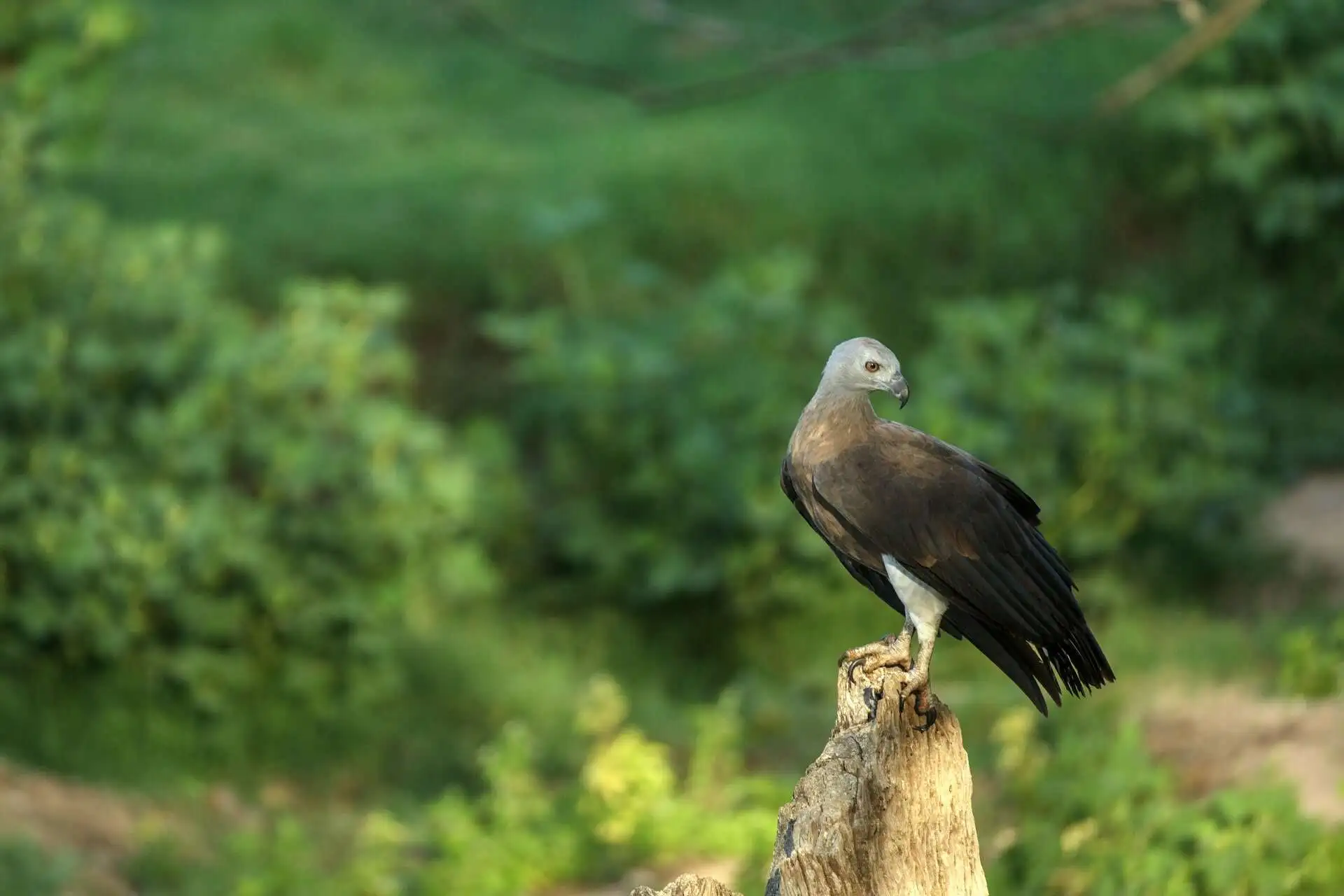
Grey-headed Fish Eagle
Scientific Name: Haliaeetus ichthyaetus
A skilled predator, this eagle is often seen near lakes and rivers, scanning the waters for fish. Its strong, broad wings and piercing gaze make it a majestic sight.
Ruddy Shelduck
Scientific Name: Tadorna ferruginea
Also known as the Brahminy Duck, this striking orange-colored waterfowl migrates from Central Asia and is often seen near lakes and wetlands.
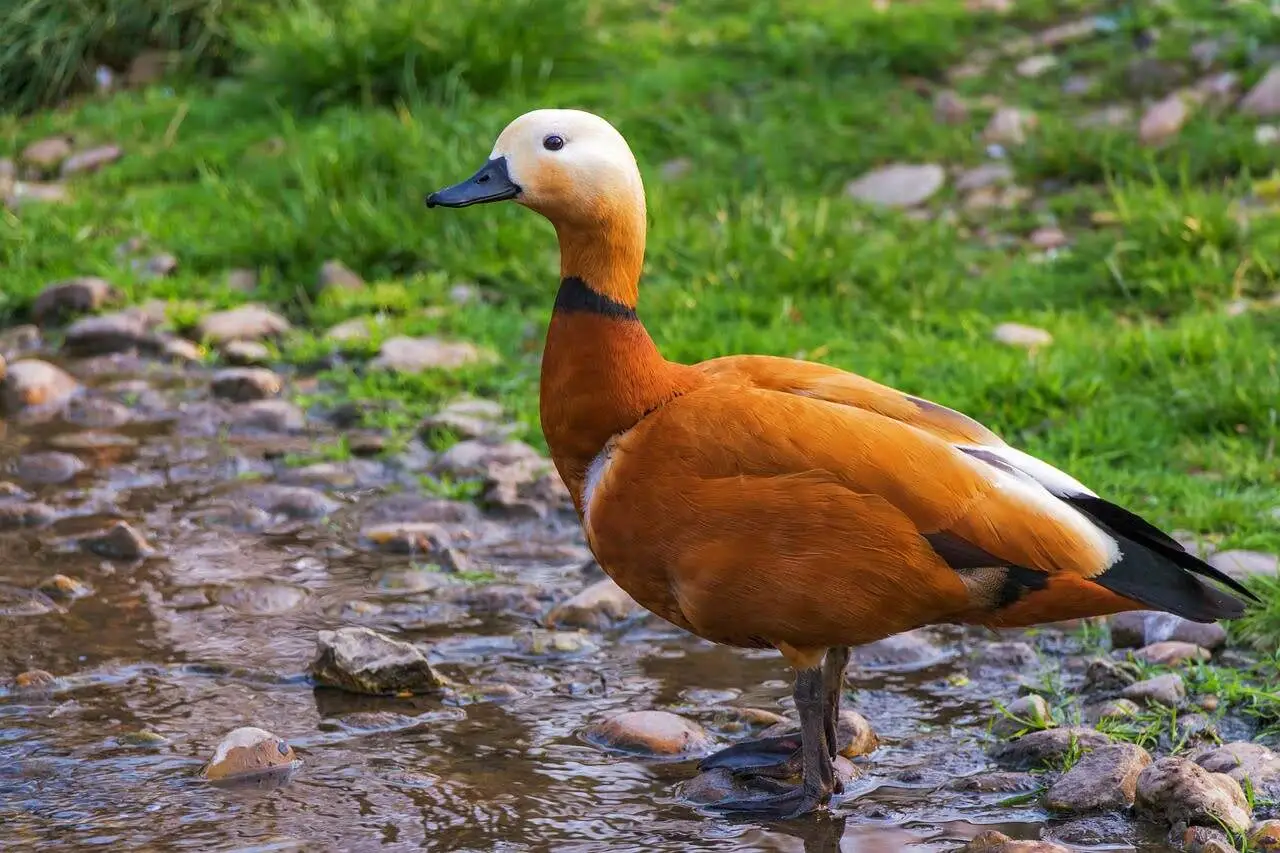
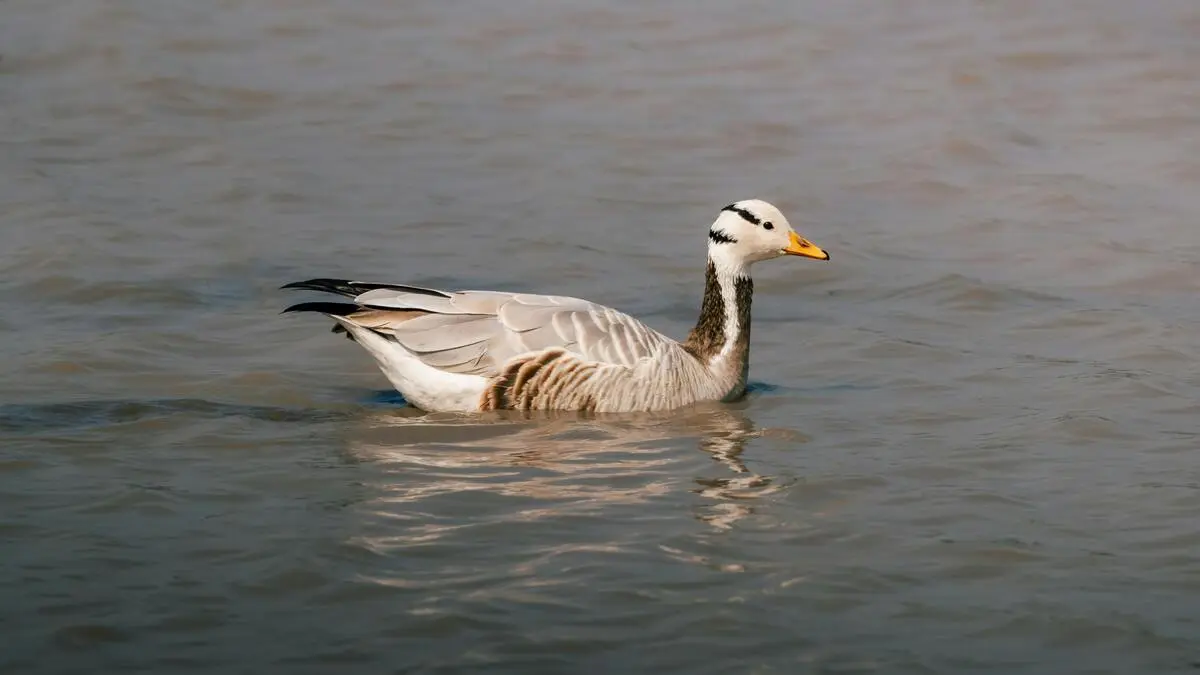
Bar-headed Goose
Scientific Name: Anser indicus
A high-altitude migrant, the Bar-headed Goose arrives in Satpuda during winter. It is famous for its ability to fly over the Himalayas during migration.
Osprey
Scientific Name: Pandion haliaetus
A powerful fish-eating raptor that visits Satpura in winter, often seen hovering over rivers before diving for prey.
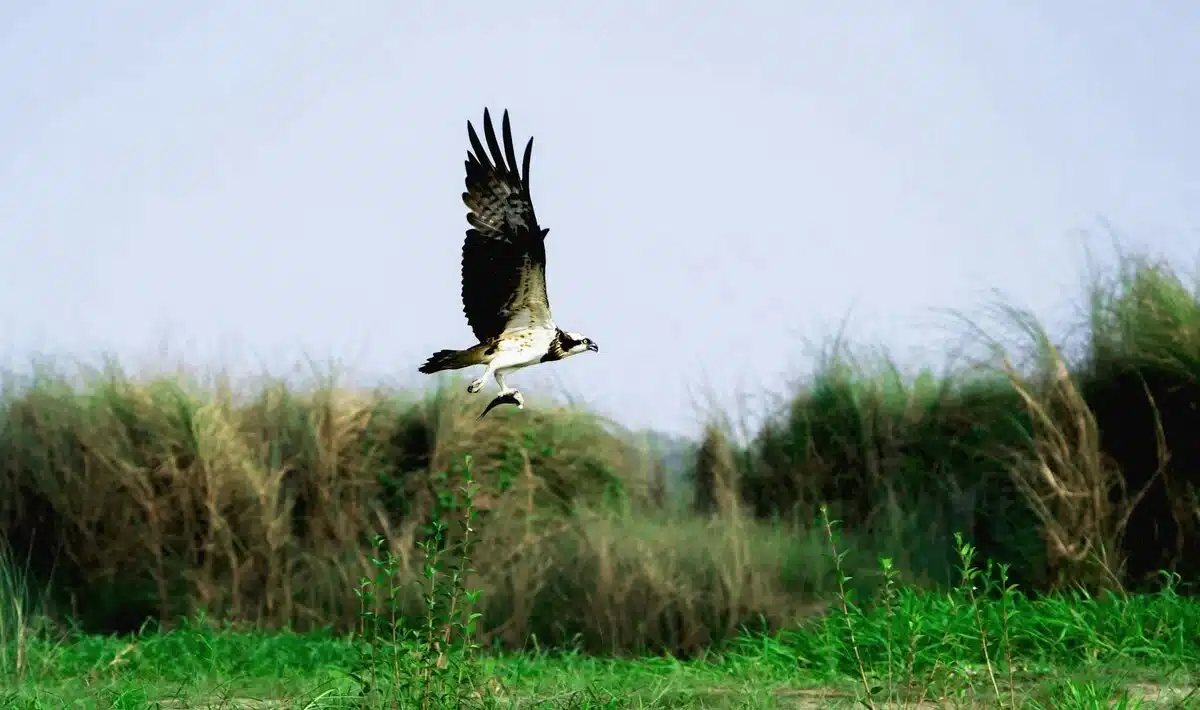
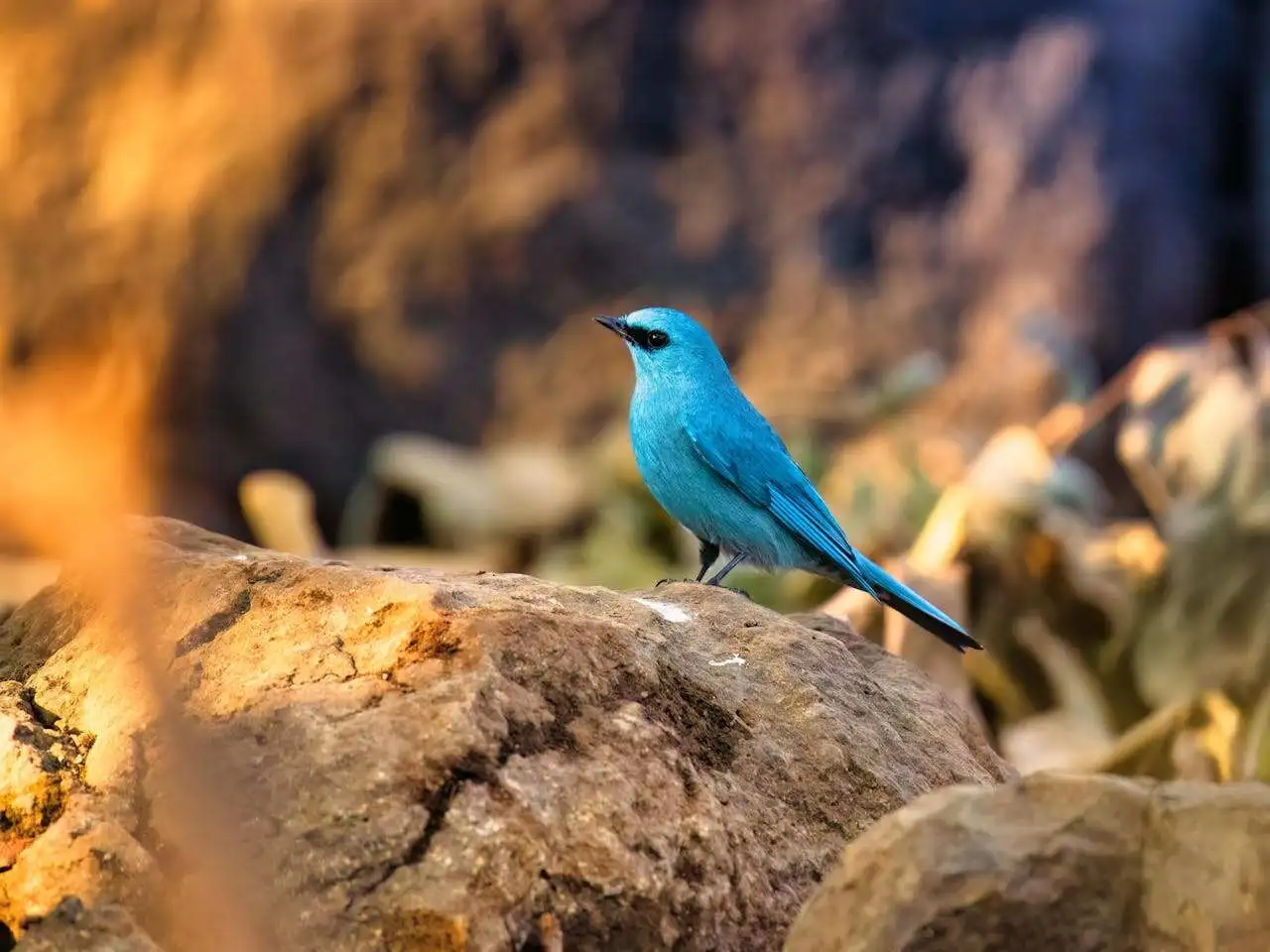
Verditer Flycatcher
Scientific Name: Eumyias thalassinus
A stunning turquoise-blue migratory bird that perches in open woodlands and is easily spotted due to its vibrant color.
Asian Brown Flycatcher
Scientific Name: Muscicapa dauurica
A small and elusive migratory bird that blends into the forest canopy, making it difficult to spot.
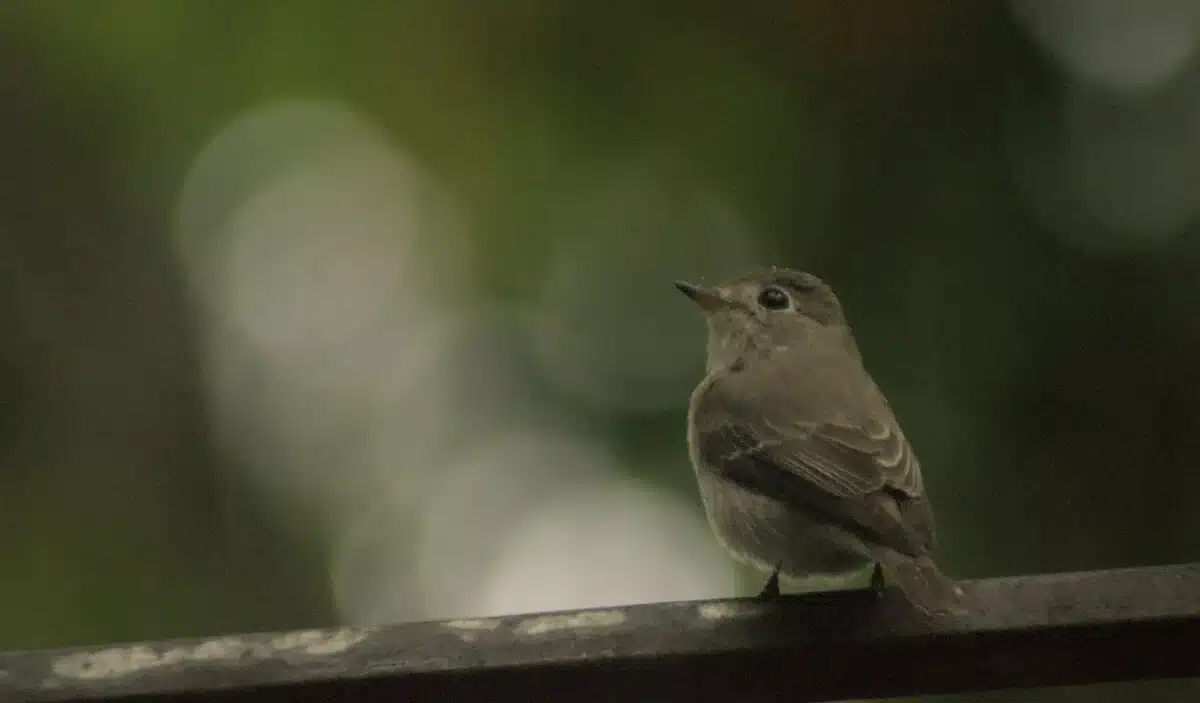
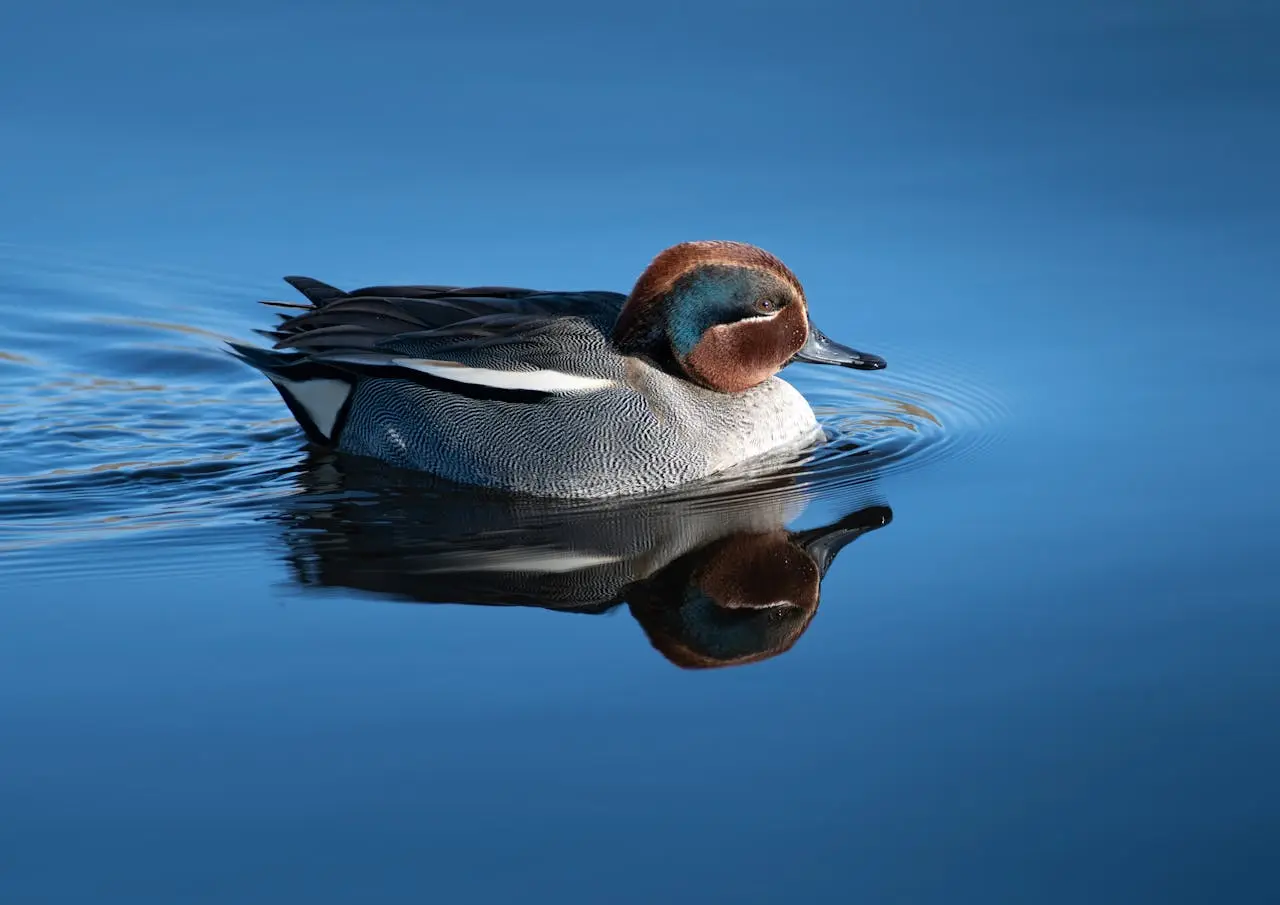
Common Teal(Eurasian Teal)
Scientific Name: Anas crecca
A small dabbling duck that arrives in winter, often seen in large flocks in marshy areas and shallow lakes.
Eurasian Wigeon
Scientific Name: Mareca penelope
A winter visitor with a distinctive chestnut head and pale forehead, often found swimming in groups on water bodies.
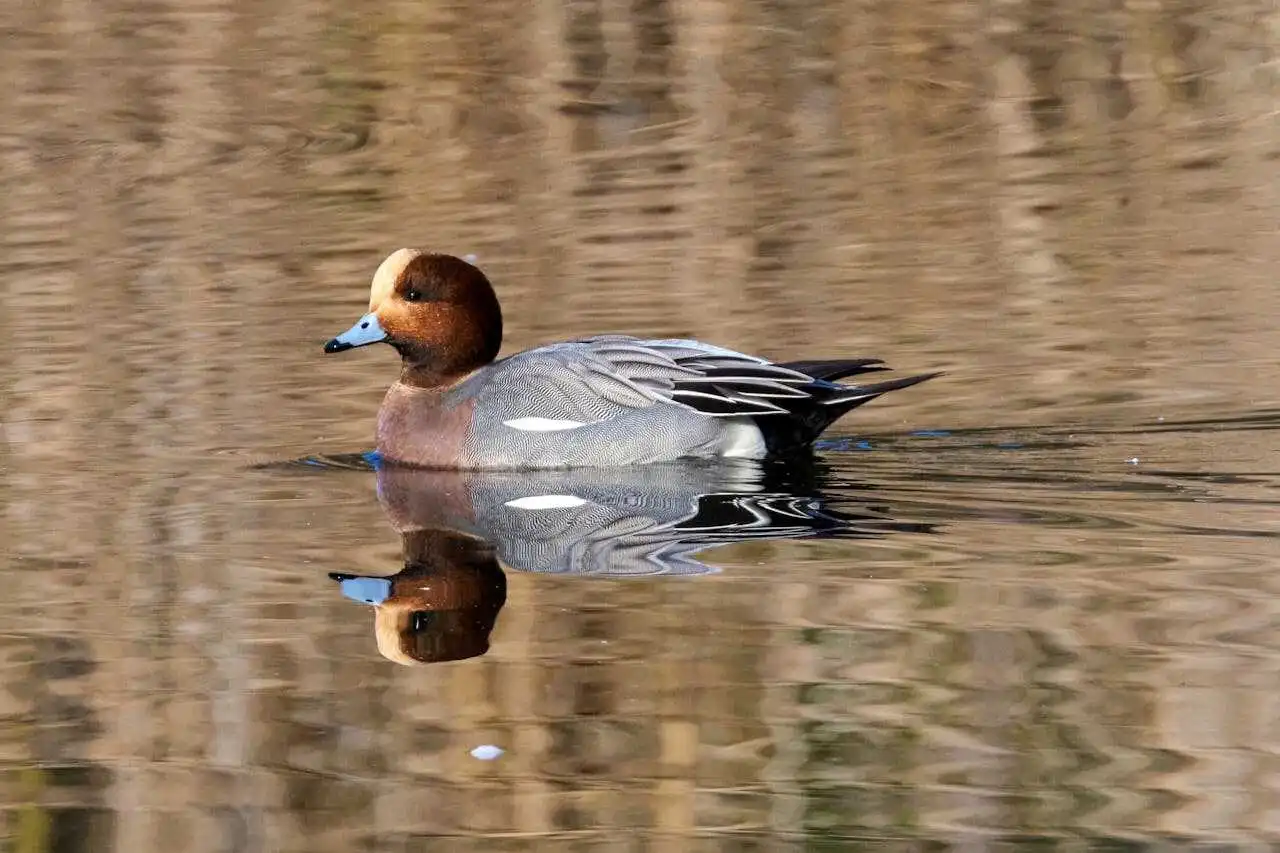
More Migratory Birds of Satpura
- Northern Pintail (Anas acuta)
- Common Pochard (Aythya ferina)
- Ferruginous Duck (Aythya nyroca)
- Garganey (Spatula querquedula)
- Greater Flamingo (Phoenicopterus roseus)
- Lesser Flamingo (Phoenicoparrus minor)
- Black-tailed Godwit (Limosa limosa)
- Green Sandpiper (Tringa ochropus)
- Common Sandpiper (Actitis hypoleucos)
- Wood Sandpiper (Tringa glareola)
- Marsh Sandpiper (Tringa stagnatilis)
- Pied Avocet (Recurvirostra avosetta)
- Eurasian Curlew (Numenius arquata)
- Little Stint (Calidris minuta)
- Ruff (Calidris pugnax)
- Rosy Starling (Pastor roseus)
- Siberian Rubythroat (Calliope calliope)
- Bluethroat (Luscinia svecica)
- Eurasian Sparrowhawk (Accipiter nisus)
- Amur Falcon (Falco amurensis)
- Steppe Eagle (Aquila nipalensis)
- Booted Eagle (Hieraaetus pennatus)
- Peregrine Falcon (Falco peregrinus)
- Pallid Harrier (Circus macrourus)
- Montagu’s Harrier (Circus pygargus)
Migrant Birds in Satpuda
Black-necked Stork
Scientific Name: Ephippiorhynchus asiaticus
A strikingly tall wader with glossy black-and-white plumage, often seen near wetlands, though rare due to habitat destruction.
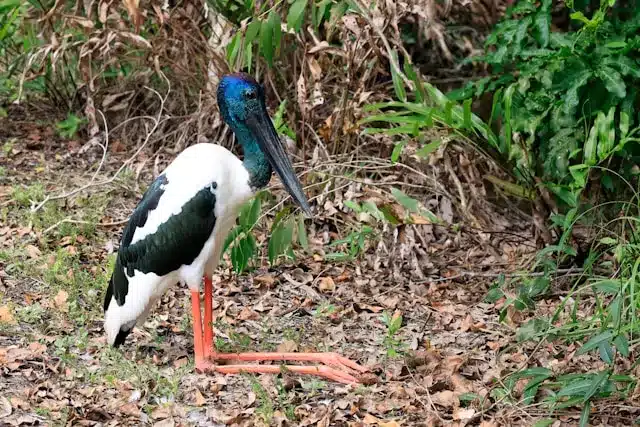
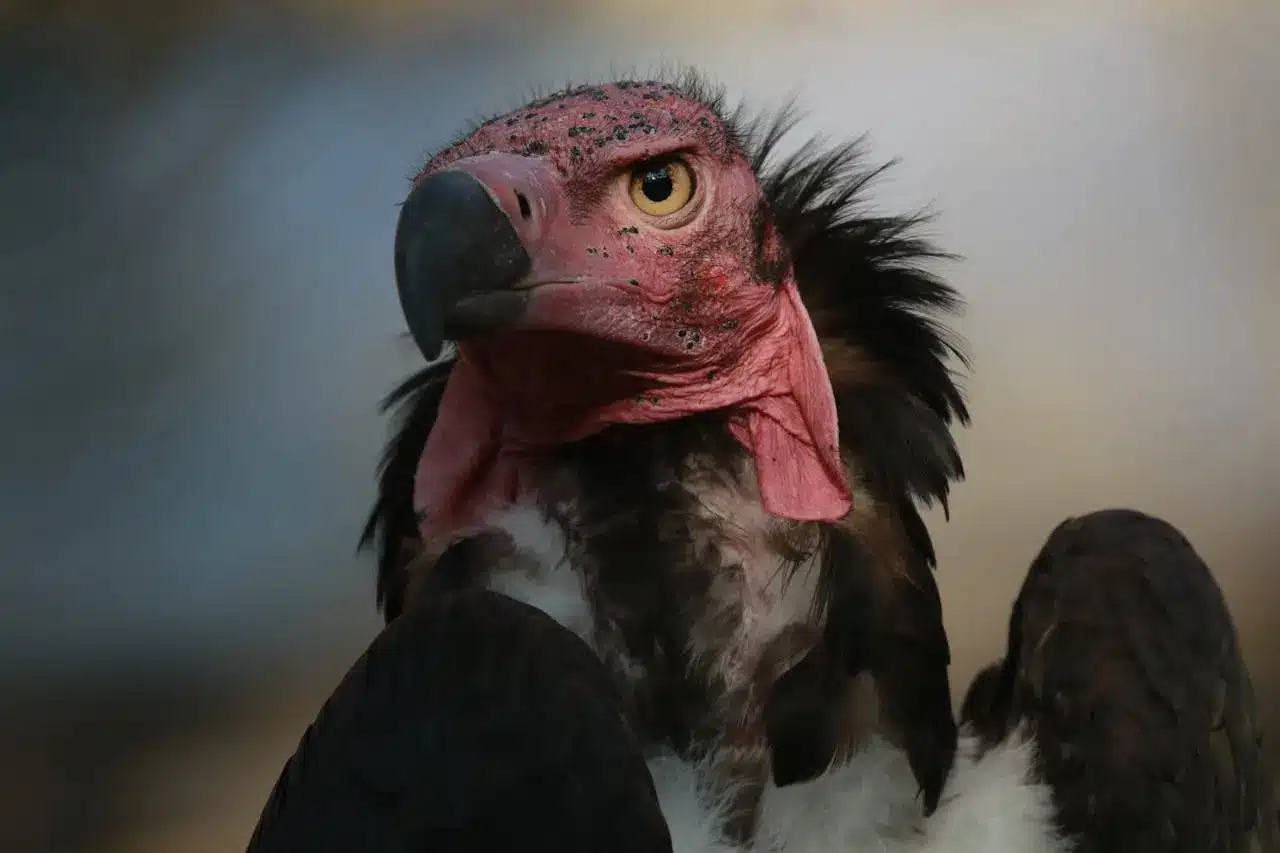
Red-headed Vulture
Scientific Name: Sarcogyps calvus
A critically endangered scavenger with a distinctive red, featherless head, once common but now seen only in remote areas.
Red Avadavat
Scientific Name: Amandava amandava
Also known as the Strawberry Finch, this tiny bird has bright red plumage during breeding season but is elusive due to its preference for dense grasslands.
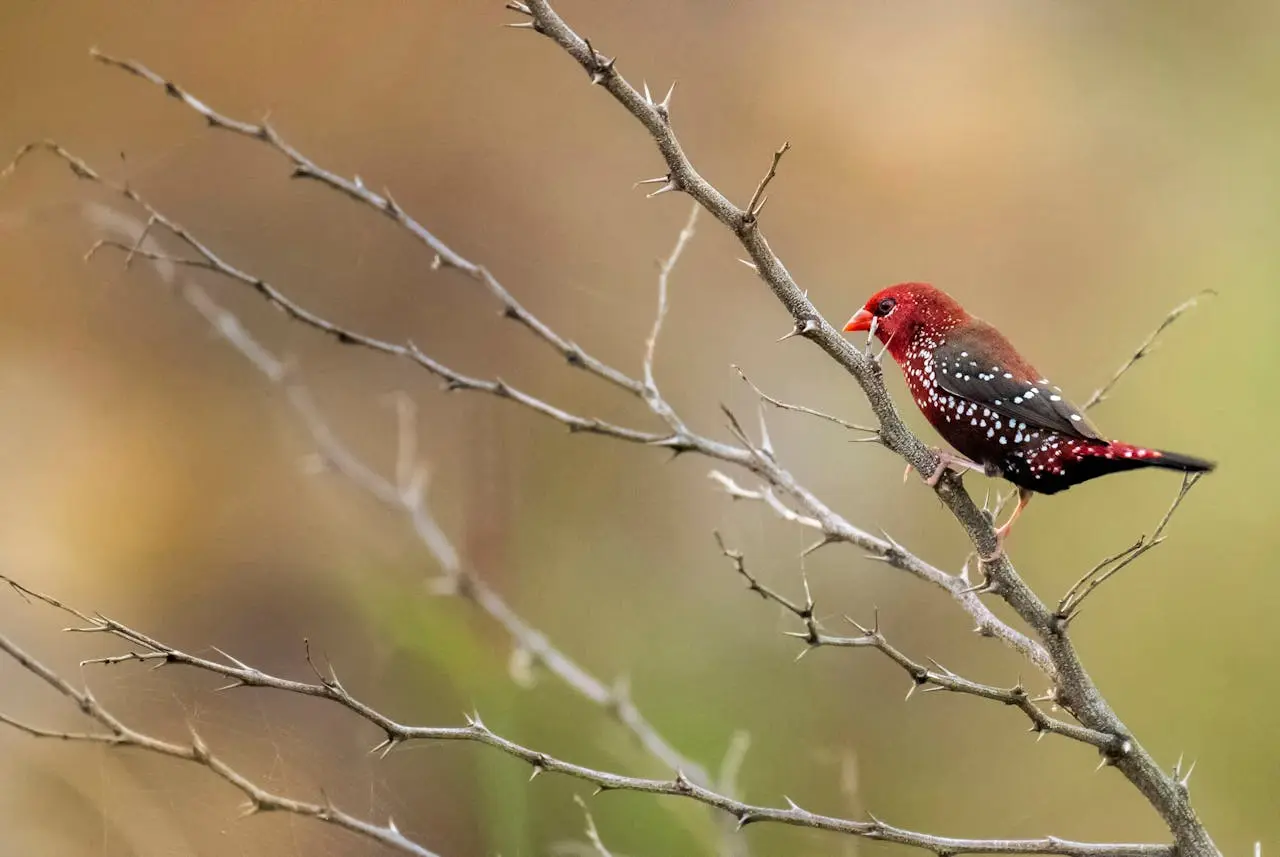
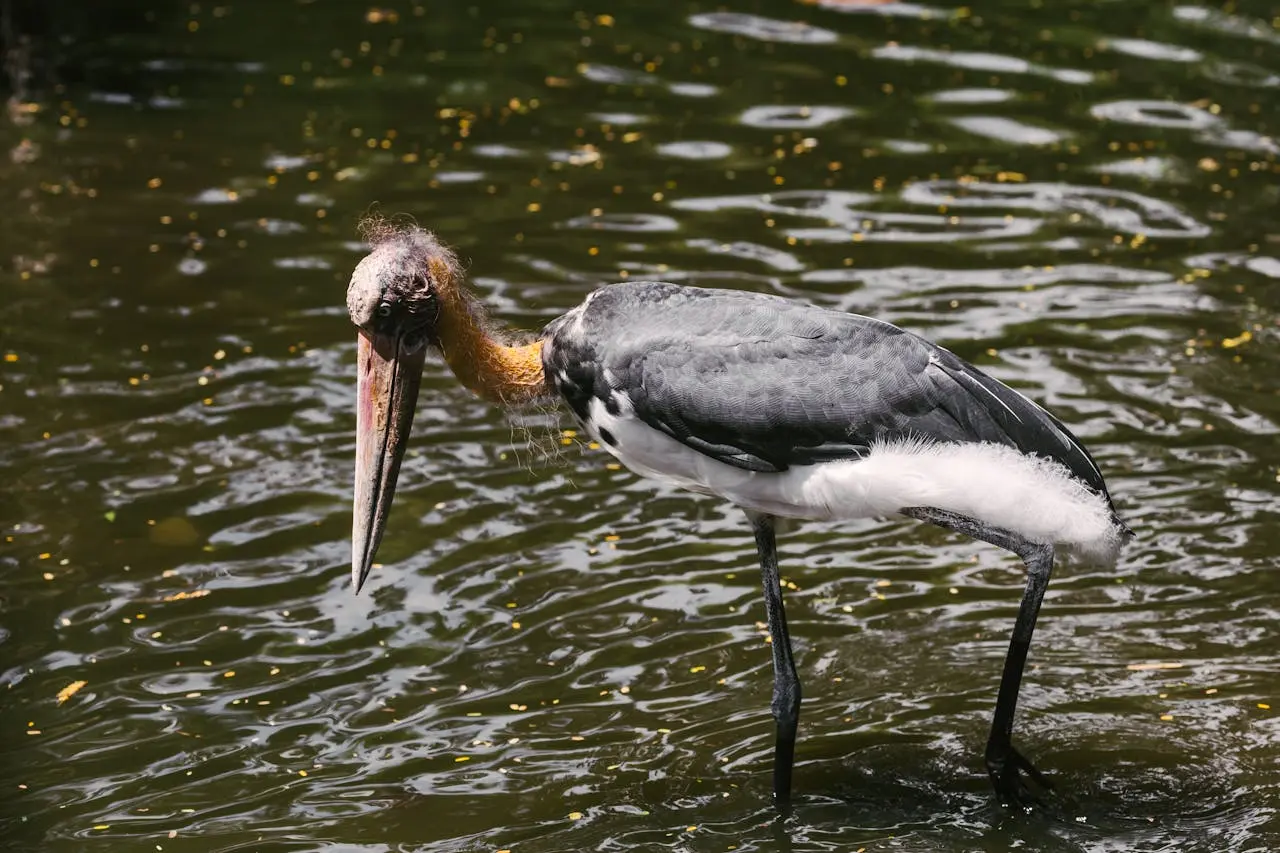
Lesser Adjutant Stork
Scientific Name: Leptoptilos javanicus
A large stork with a bare head and long legs, spotted rarely in marshy regions due to declining numbers.
Greater Painted Snipe
Scientific Name: Rostratula benghalensis
A beautifully patterned, elusive wader found in wetlands, known for its unusual role reversal, where females are more colorful and males care for the young.
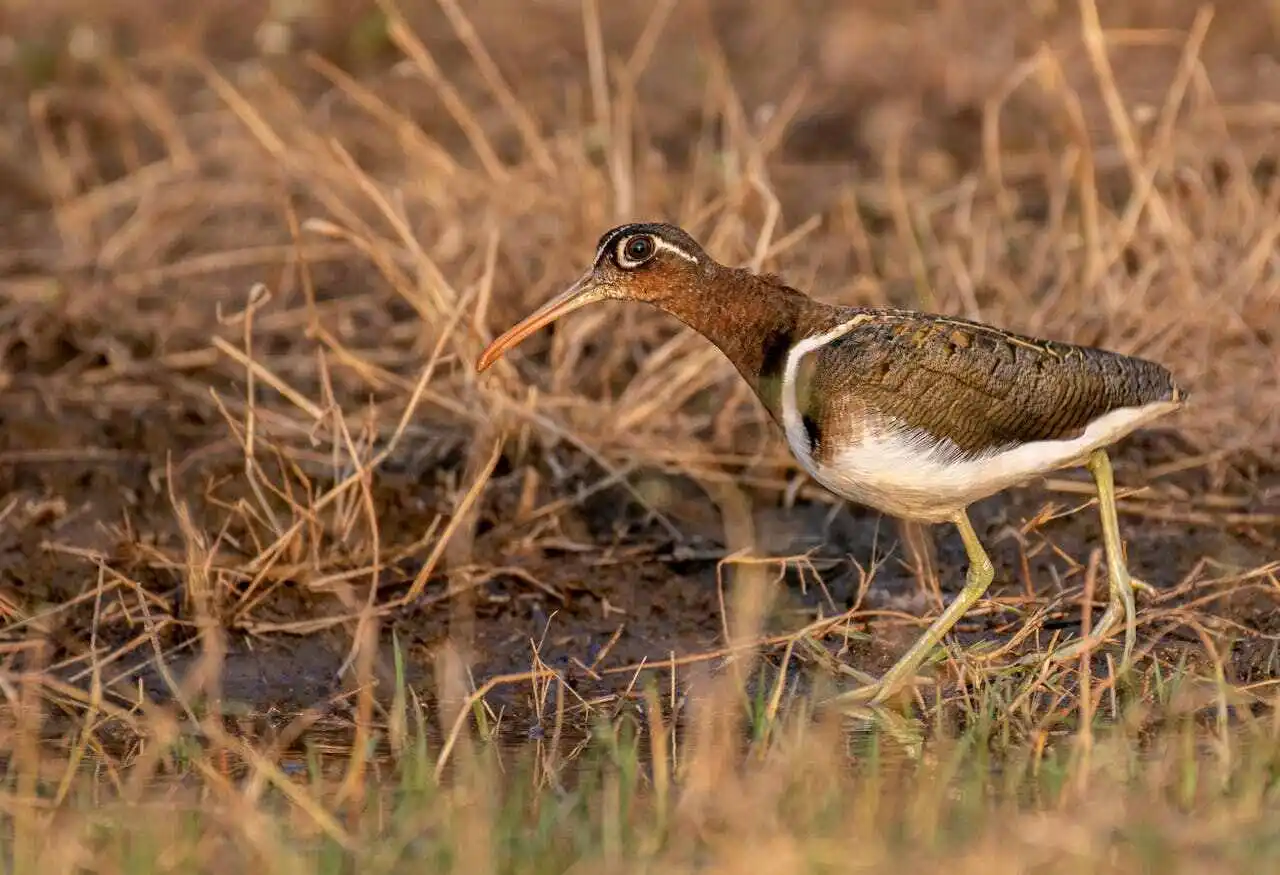
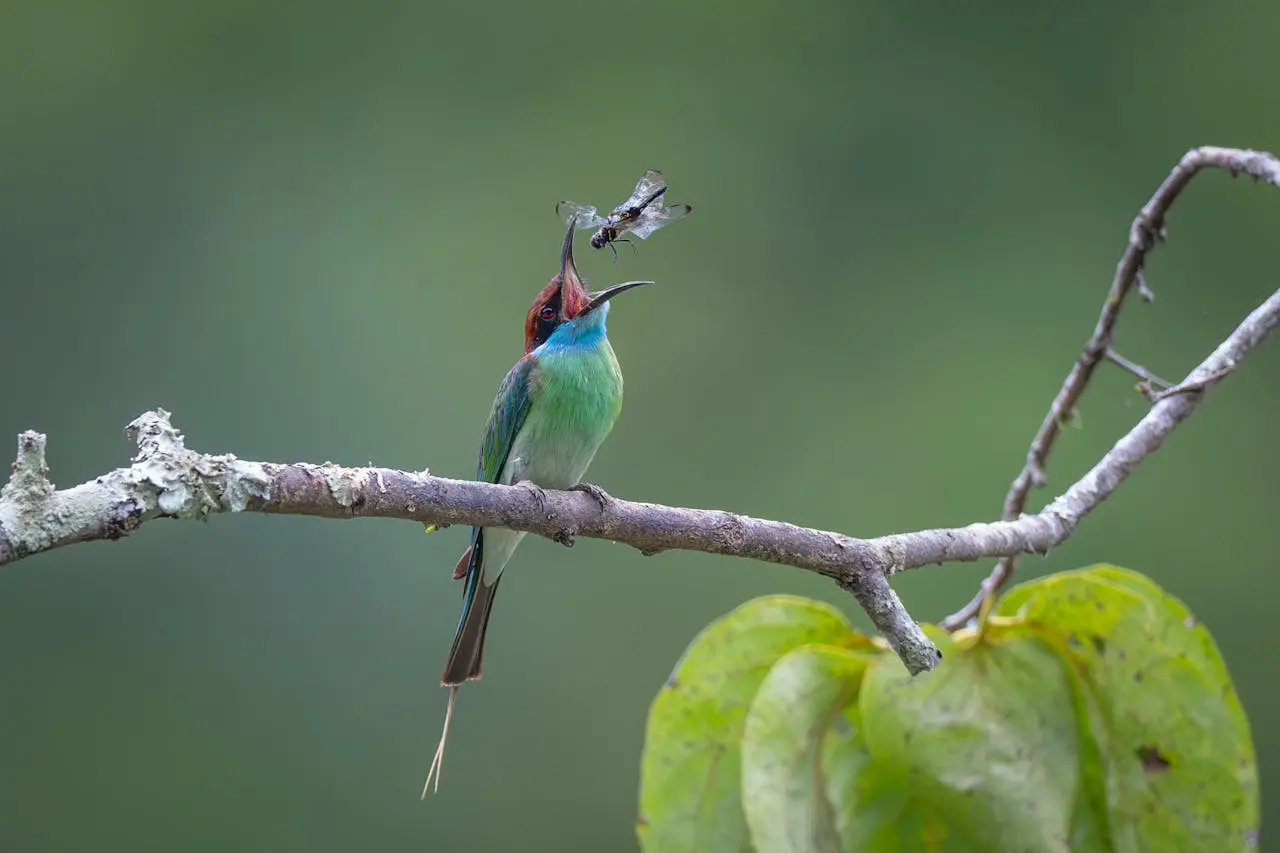
Blue-bearded Bee-eater
Scientific Name: Nyctyornis athertoni
A secretive, large bee-eater with a distinctive blue throat, often seen in dense forests rather than open fields.
Yellow-eyed Babbler
Scientific Name: Chrysomma sinense
A small bird with a striking yellow eye and long tail, found in grasslands and scrub but rarely spotted due to its shy nature.
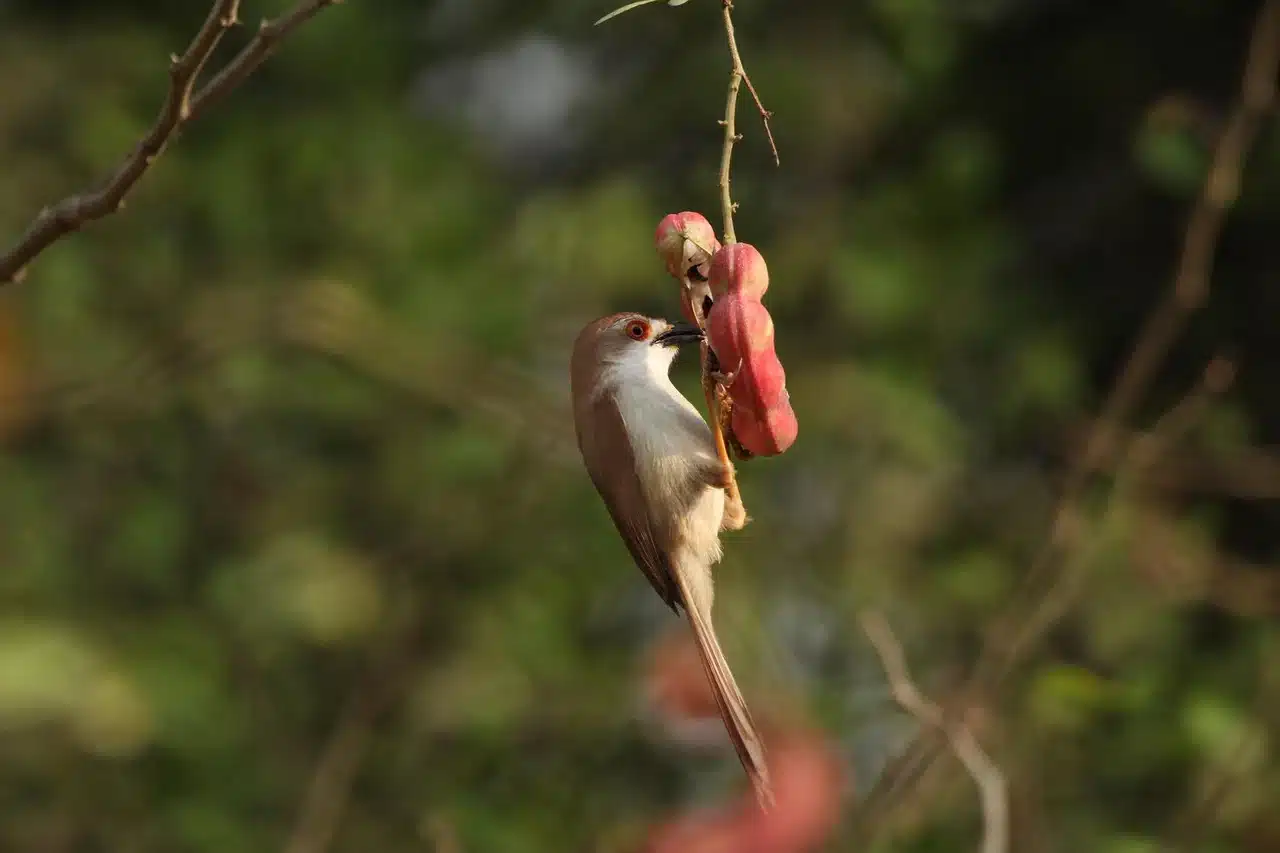
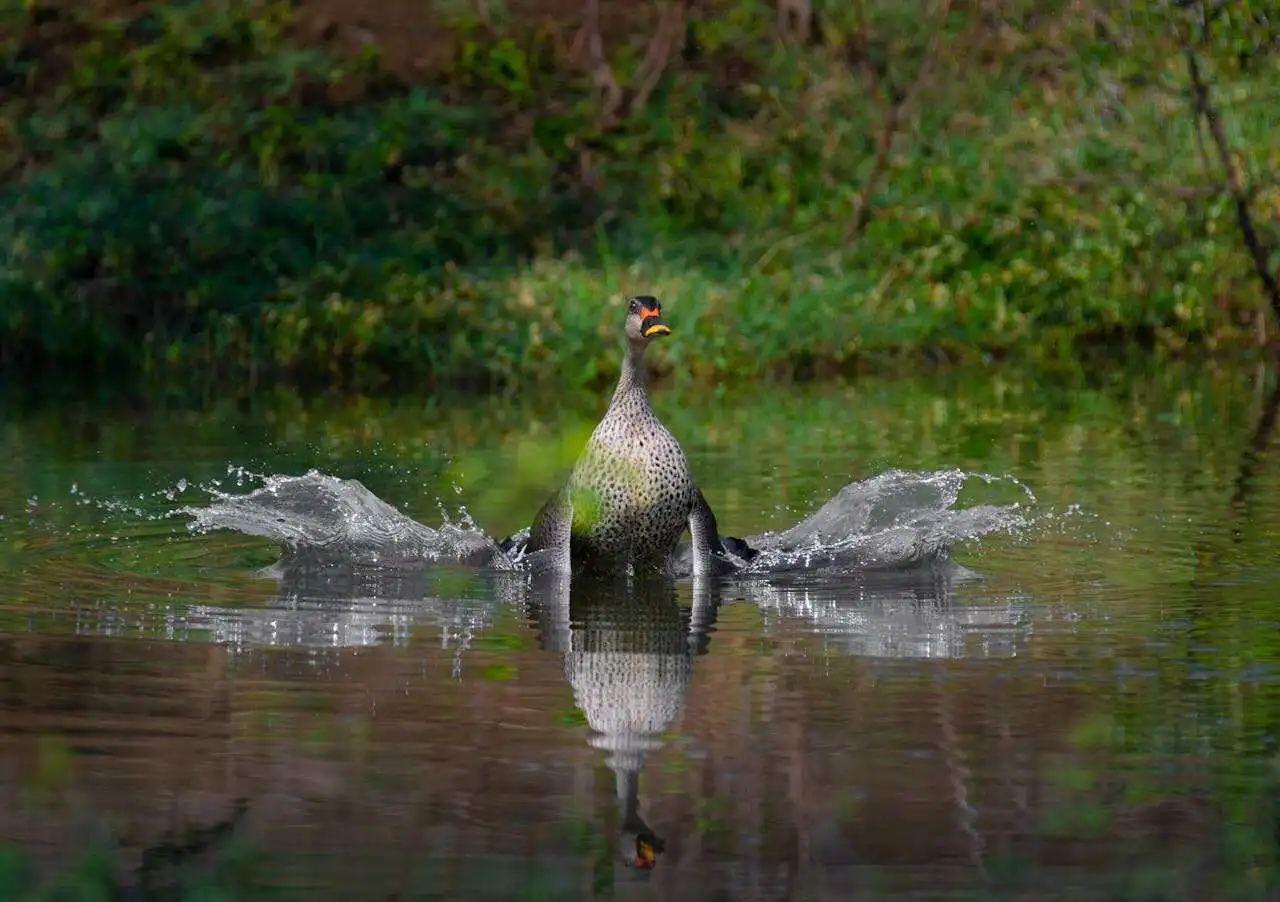
Masked Finfoot
Scientific Name: Heliopais personatus
An extremely rare waterbird with lobed feet, known for its secretive behavior in marshy habitats, making sightings very rare.
More Rarely Found Birds in Satpura
- Forest Owlet (Heteroglaux blewitti)
- Indian Vulture (Gyps indicus)
- White-rumped Vulture (Gyps bengalensis)
- Himalayan Griffon (Gyps himalayensis)
- Rufous-bellied Hawk-Eagle (Lophotriorchis kienerii)
- Heart-spotted Woodpecker (Hemicircus canente)
- White-naped Woodpecker (Chrysocolaptes festivus)
- Nordmann’s Greenshank (Tringa guttifer)
- Painted Stork (Mycteria leucocephala)
- Black-headed Ibis (Threskiornis melanocephalus)
- Woolly-necked Stork (Ciconia episcopus)
- Eurasian Griffon (Gyps fulvus)
- Jerdon’s Baza (Aviceda jerdoni)
- Long-billed Pipit (Anthus similis)
- White-bellied Minivet (Pericrocotus erythropygius)
- Green Avadavat (Amandava formosa)
- Collared Falconet (Microhierax caerulescens)
- Indian Spotted Eagle (Clanga hastata)
- Black Baza (Aviceda leuphotes)
- Pied Harrier (Circus melanoleucos)
Why Birding in Satpura Should Be on Your Travel List
Satpura might be lesser-known compared to some big-name parks, but when it comes to birding, it’s a true hidden gem. The park is home to over 300 bird species, including Malabar Whistling Thrush, Crested Hawk-Eagle, and Indian Skimmer. Its diverse landscapes—ranging from hills and rivers to dense sal forests—create the perfect environment for both resident and migratory birds.
What sets Satpura apart is the slower, more immersive experience it offers. Unlike busier parks, you can explore it through walking safaris, canoe rides, or boat safaris, giving you a peaceful setting to truly enjoy birdwatching. If you’re looking for a quiet, bird-rich escape, Satpura should definitely be on your radar.

